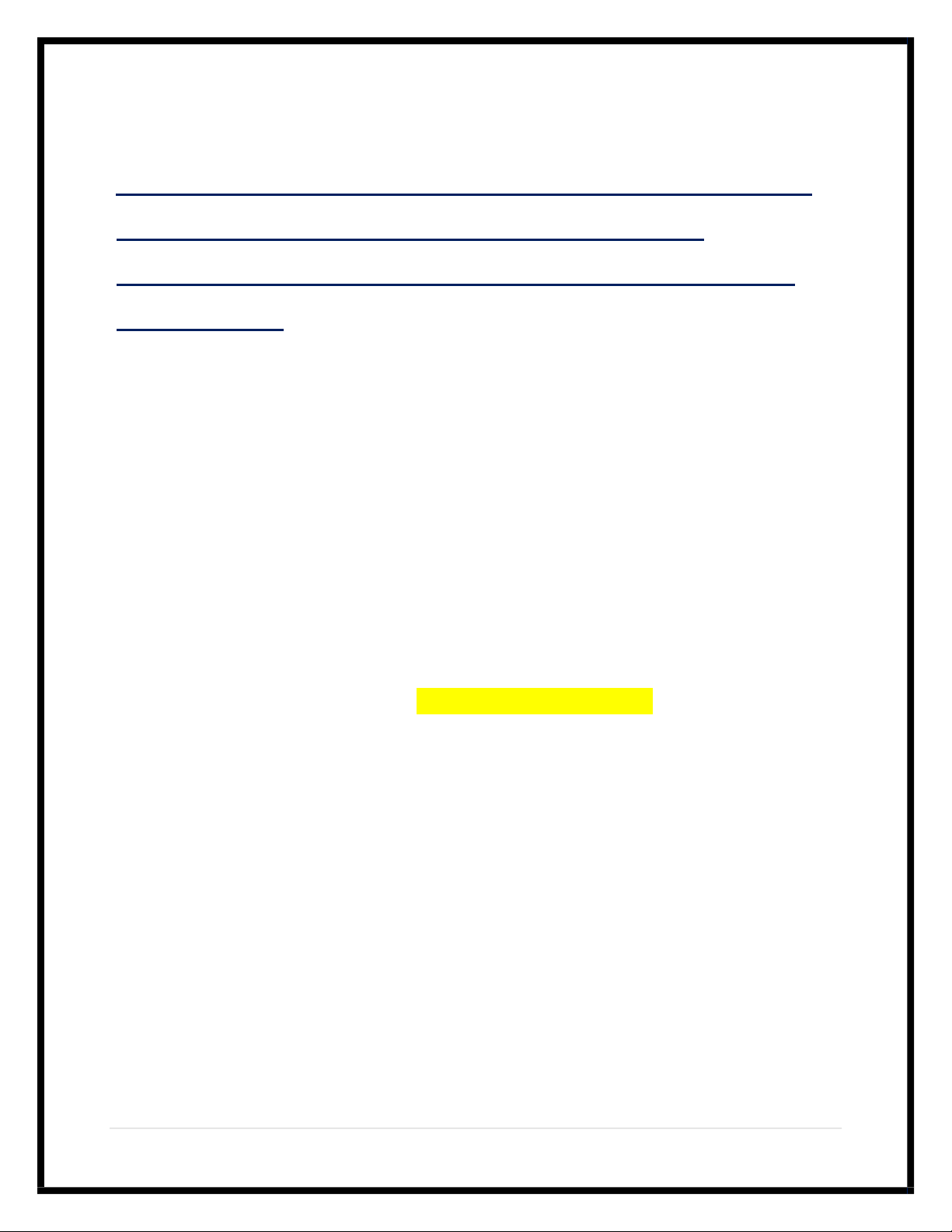
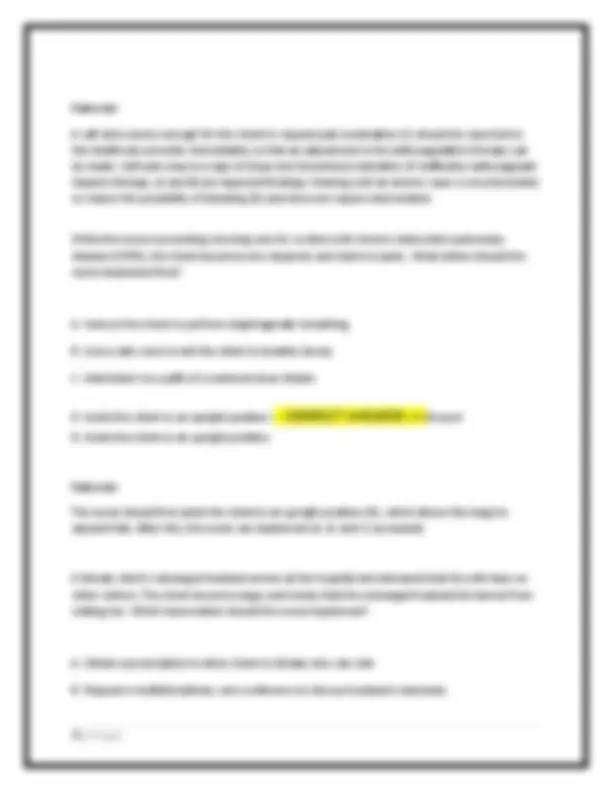
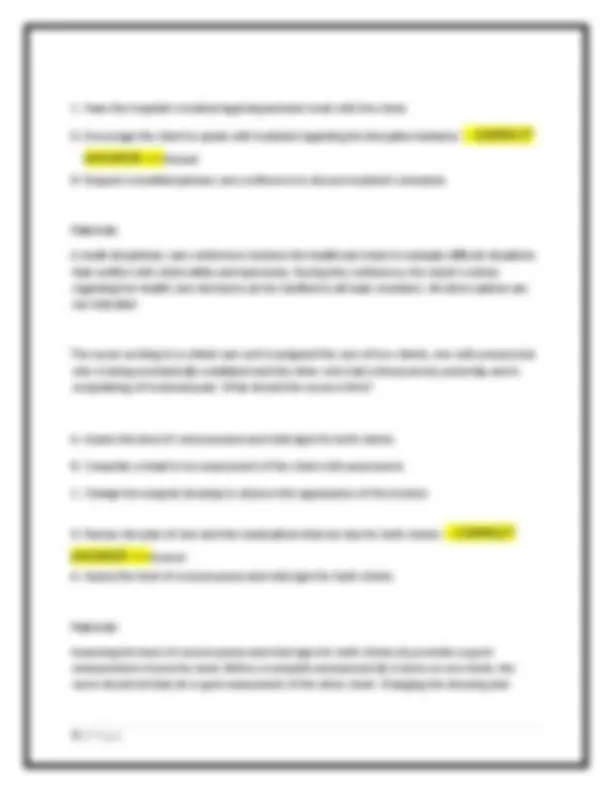
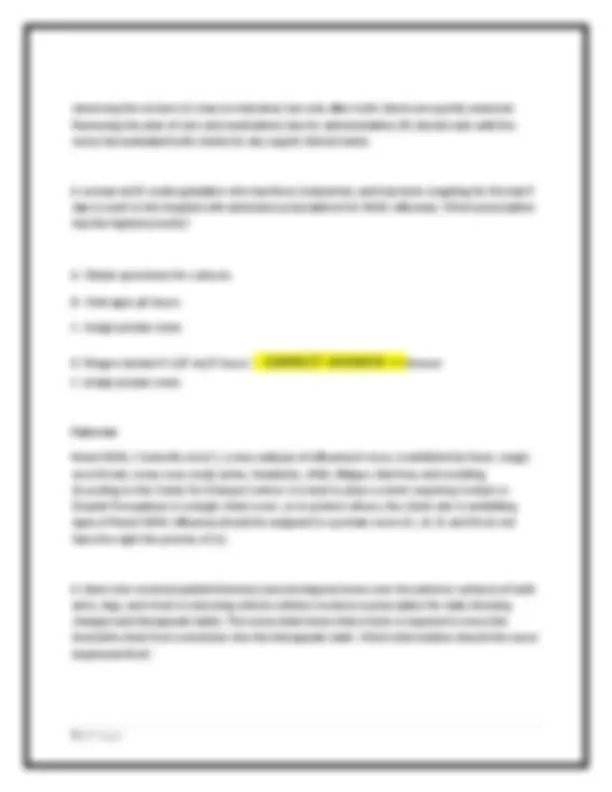
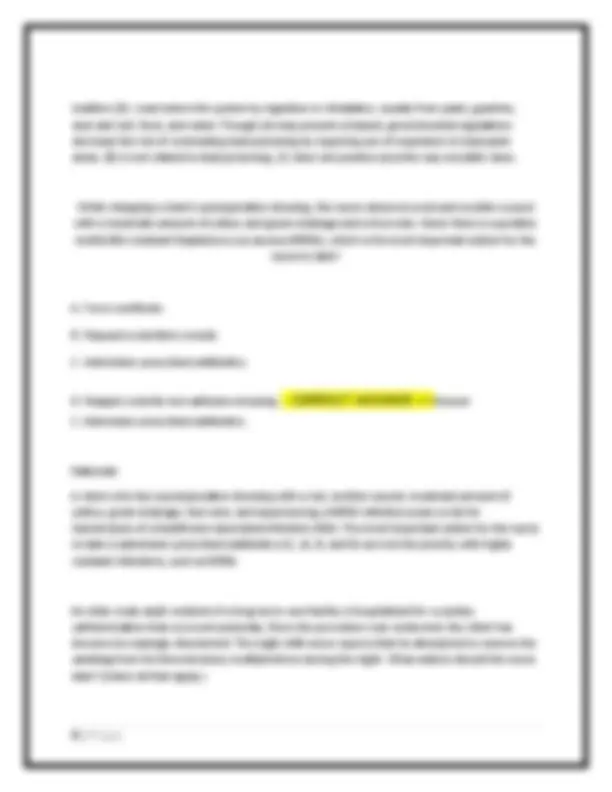
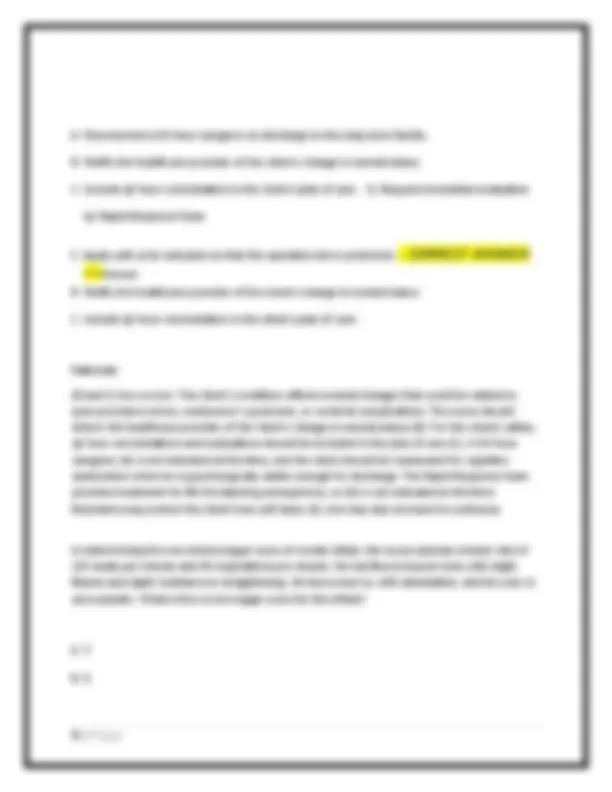
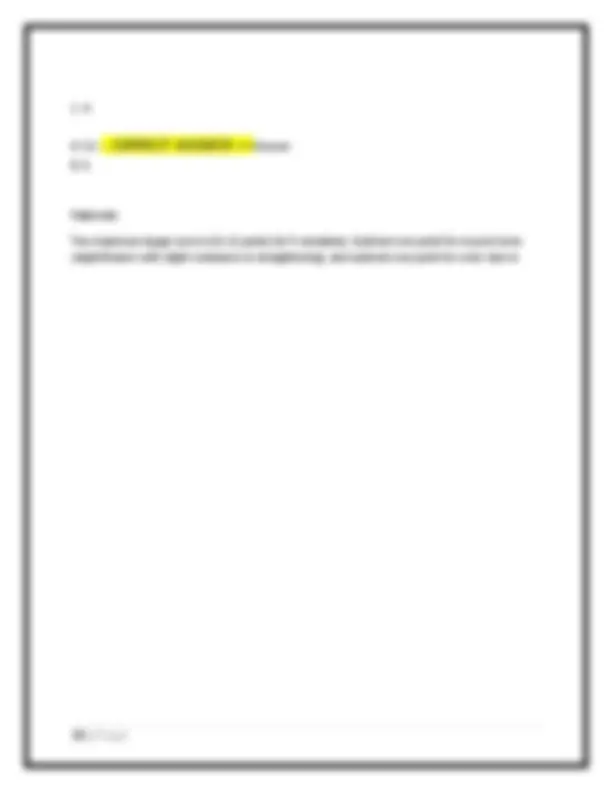
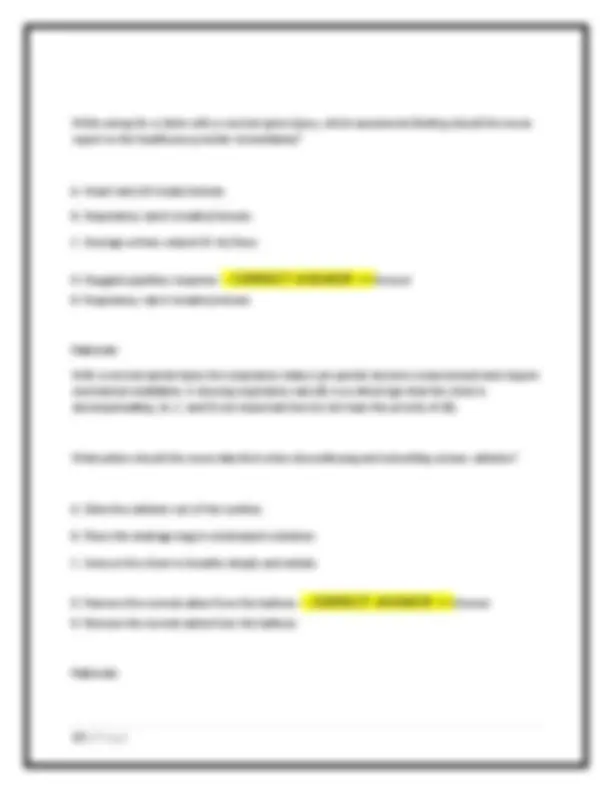
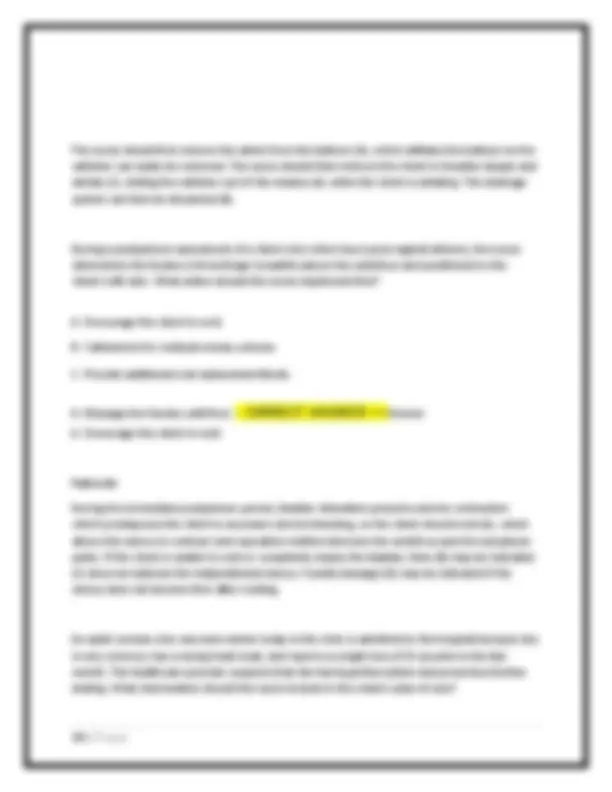
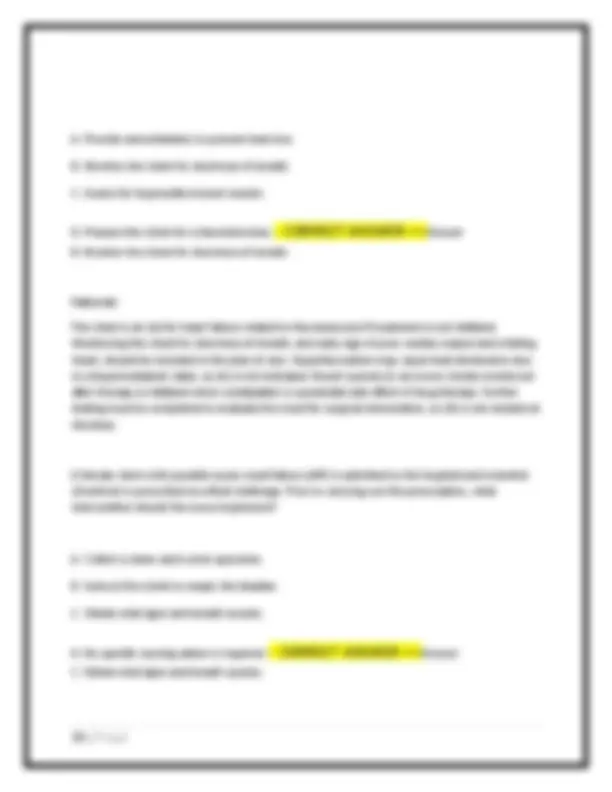
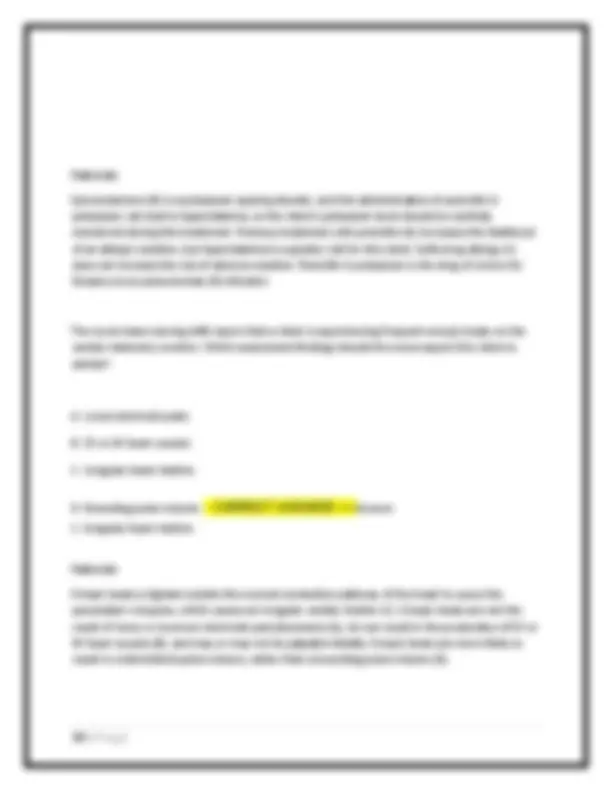
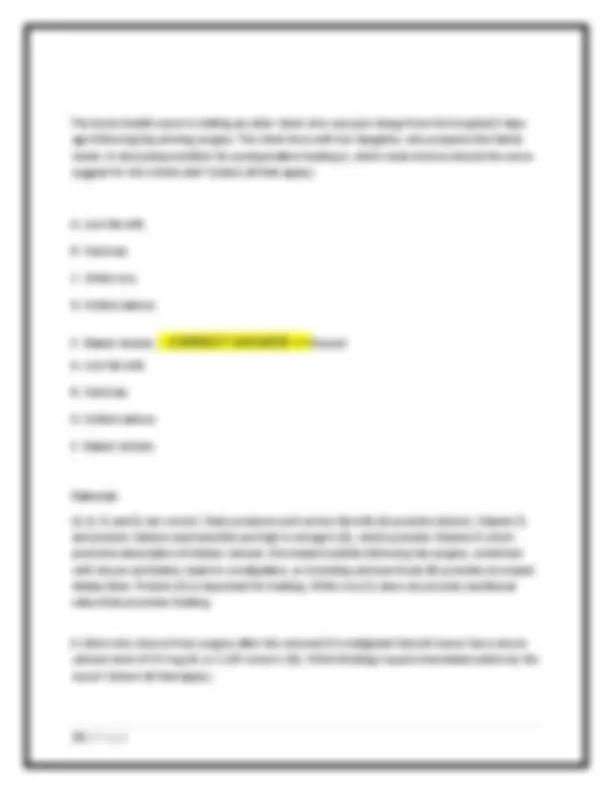
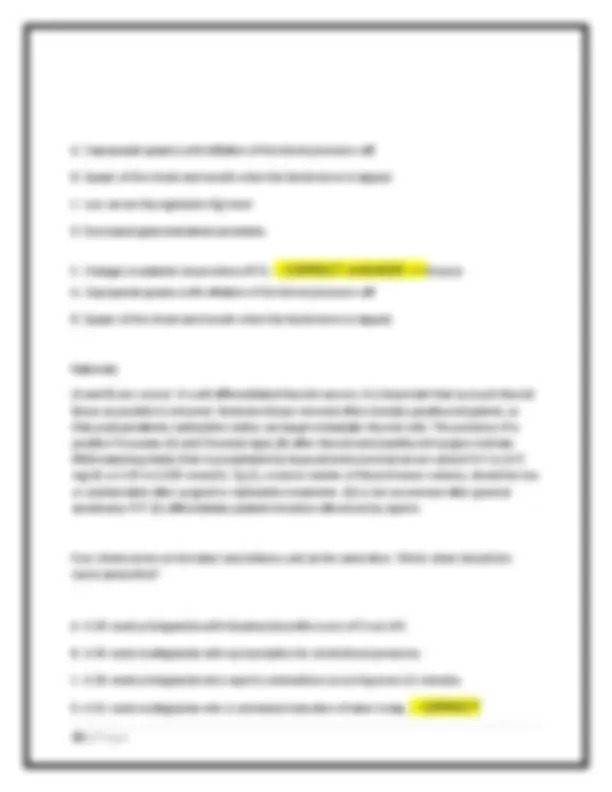
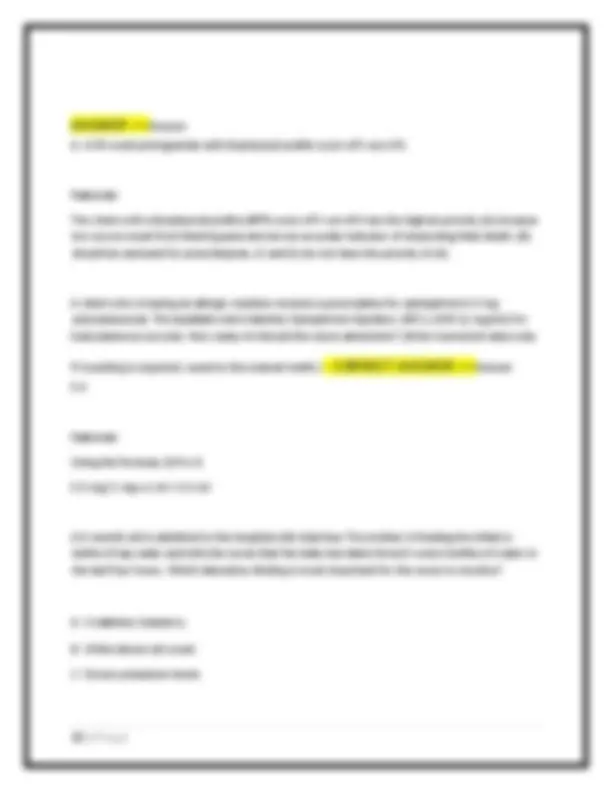
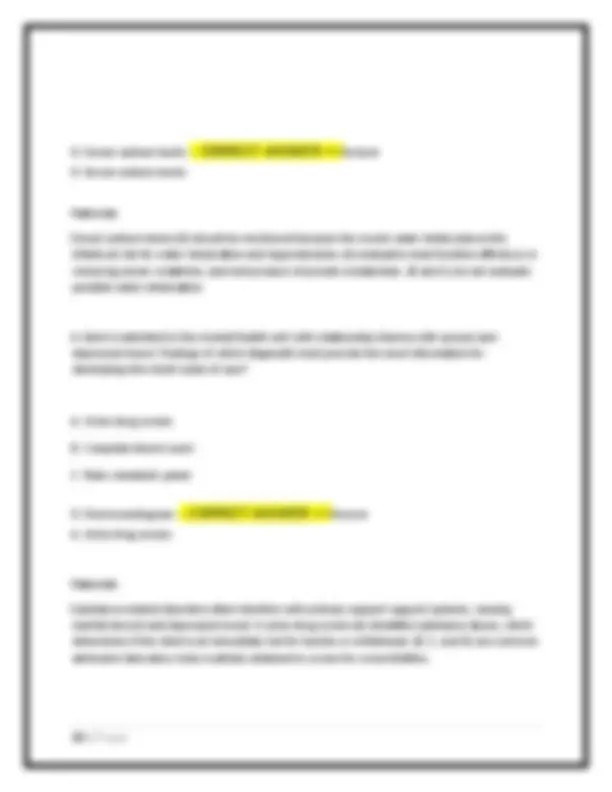
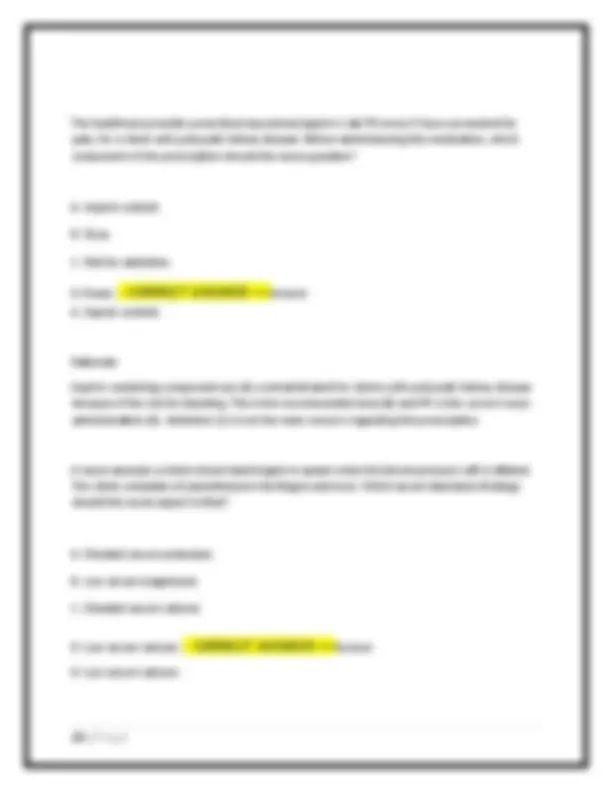
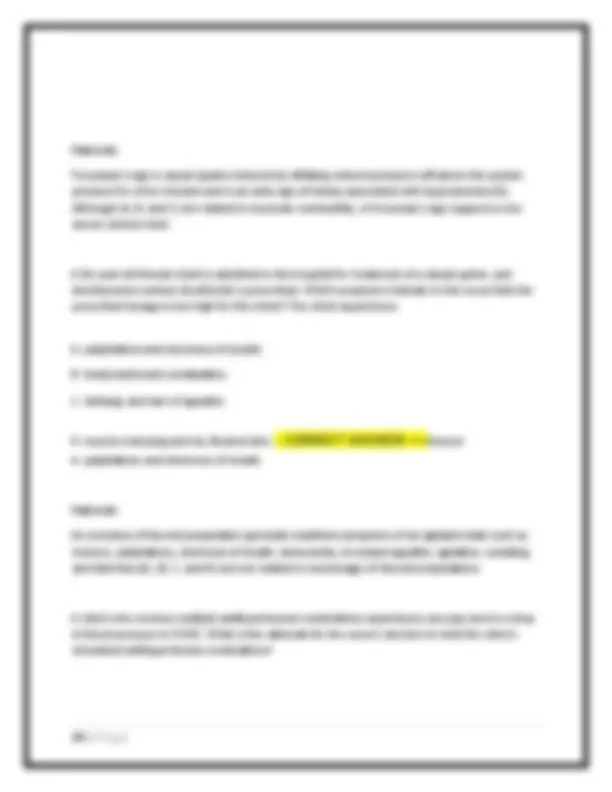
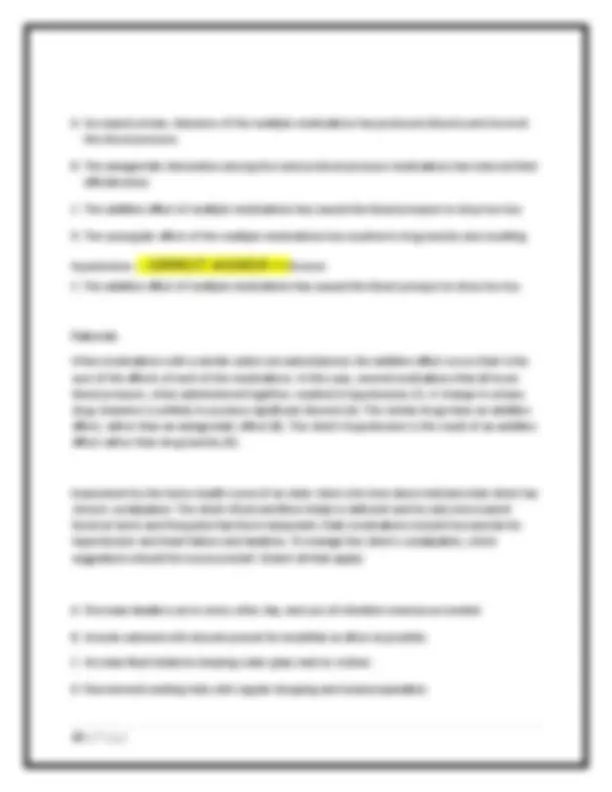
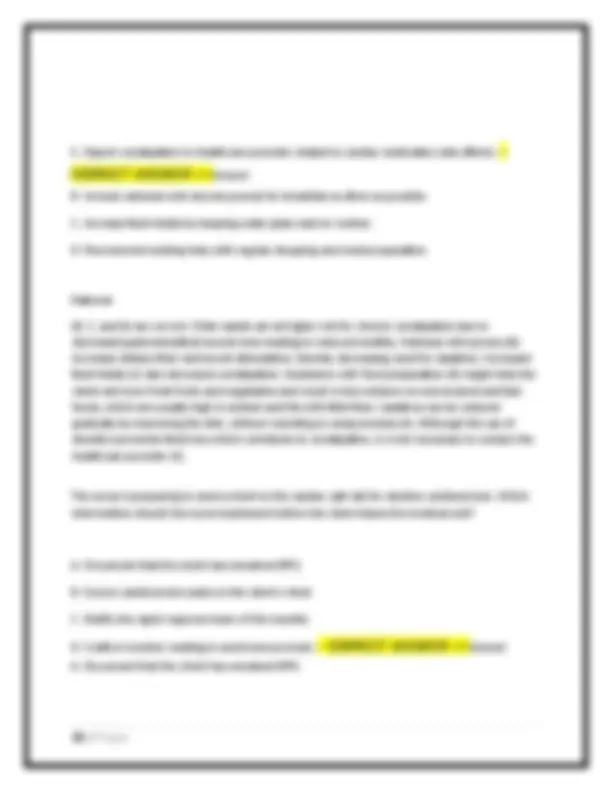
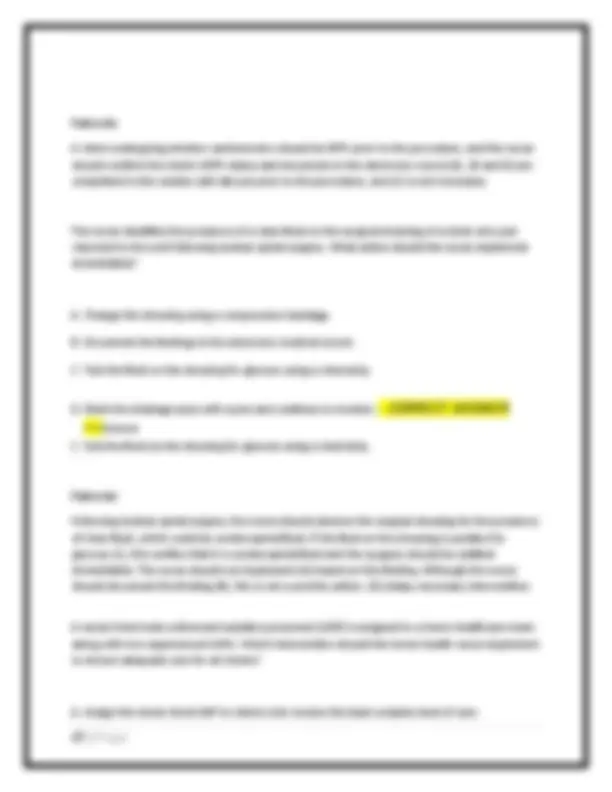
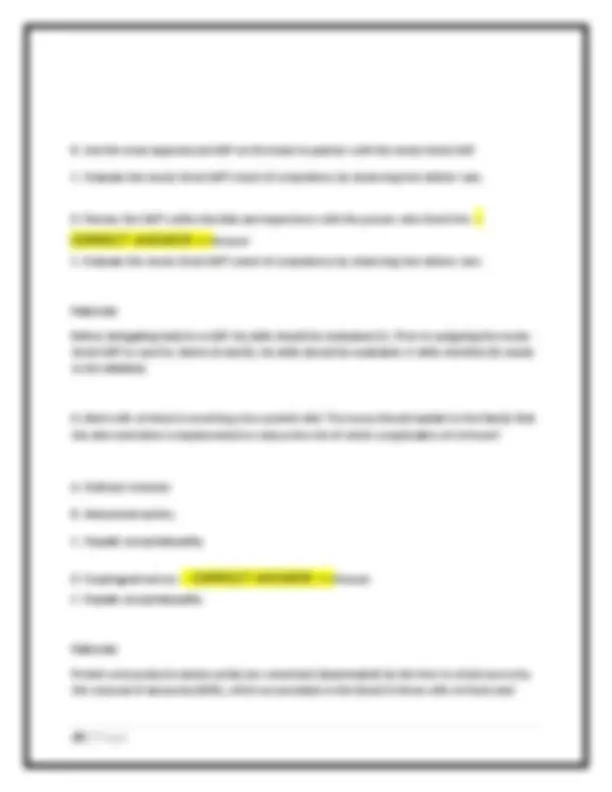
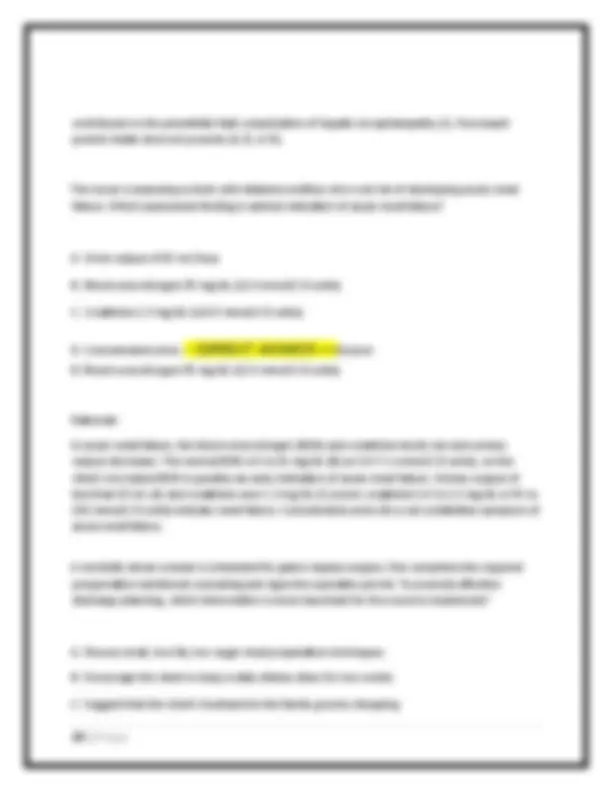
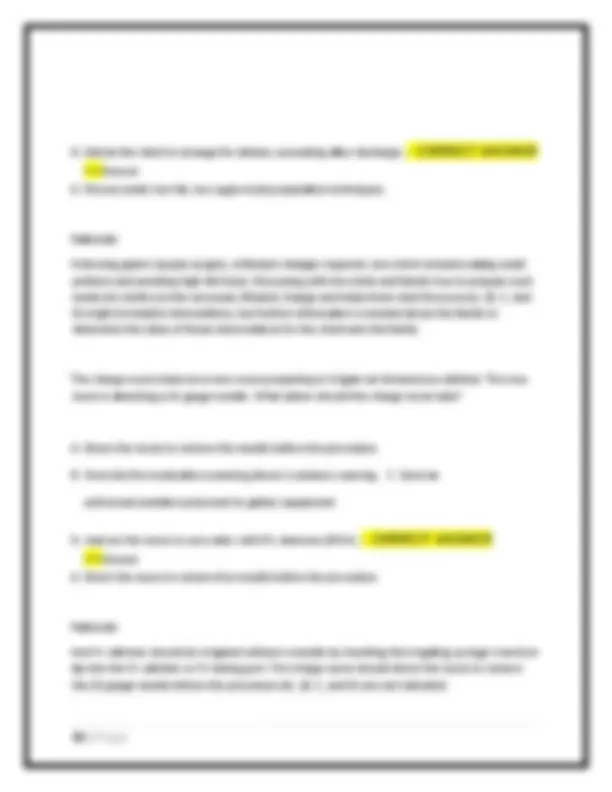
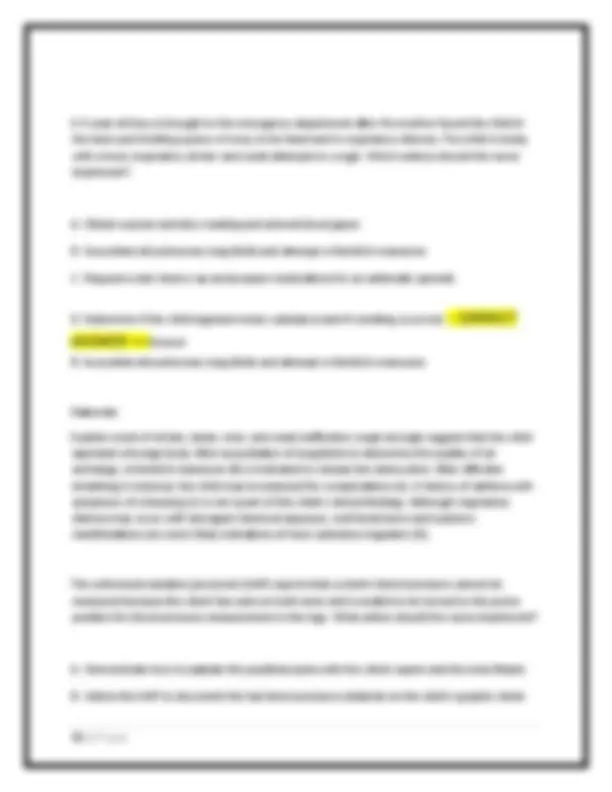
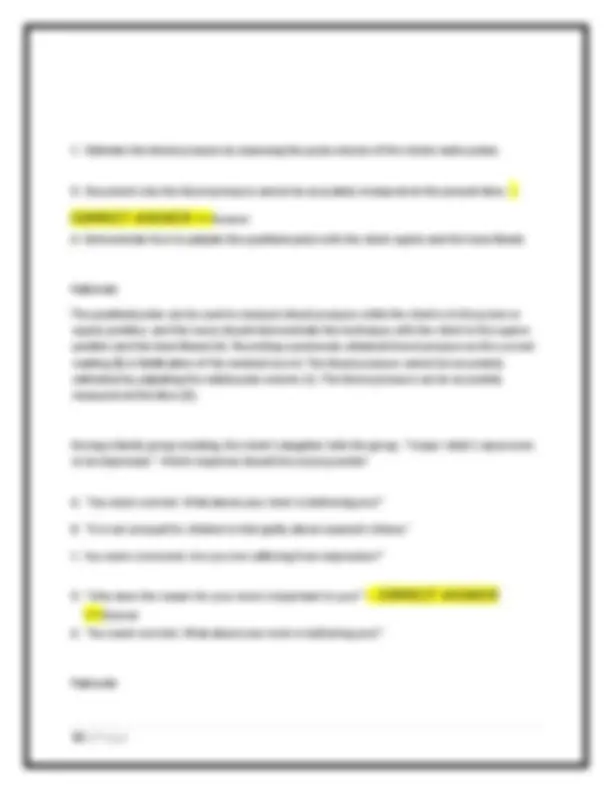
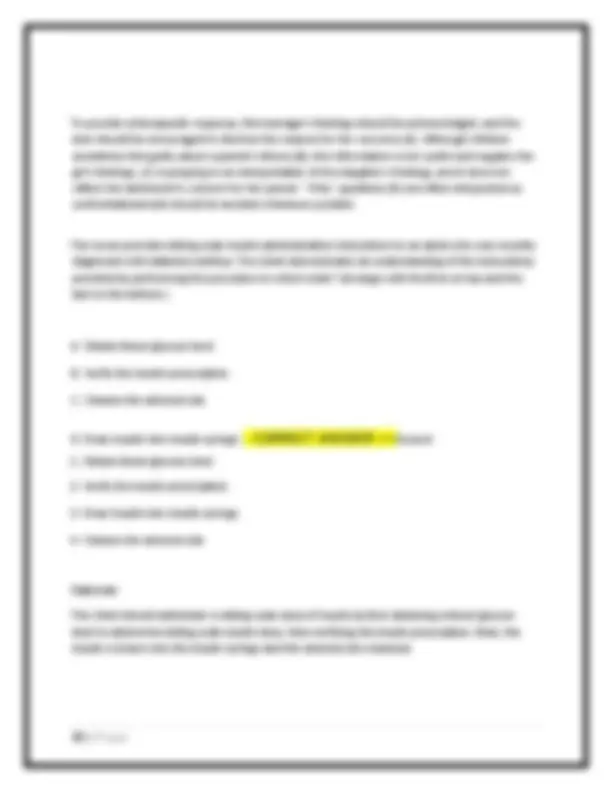
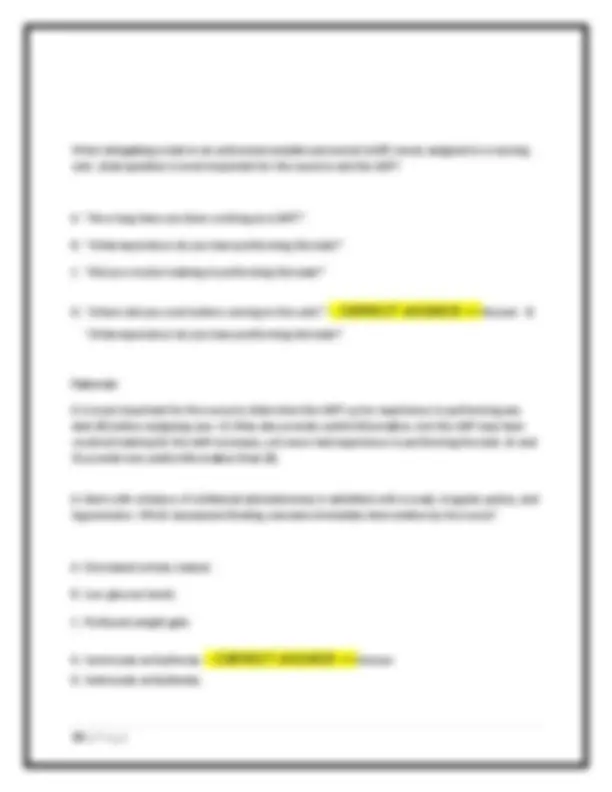
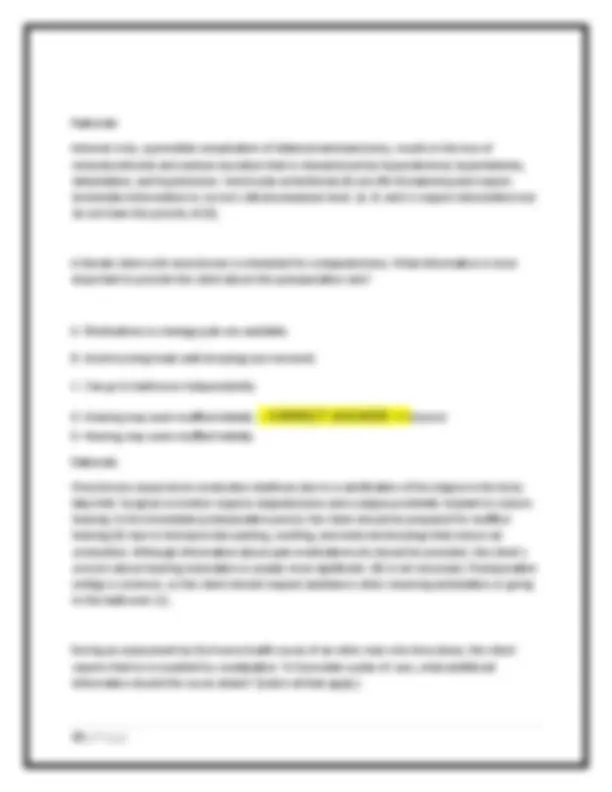
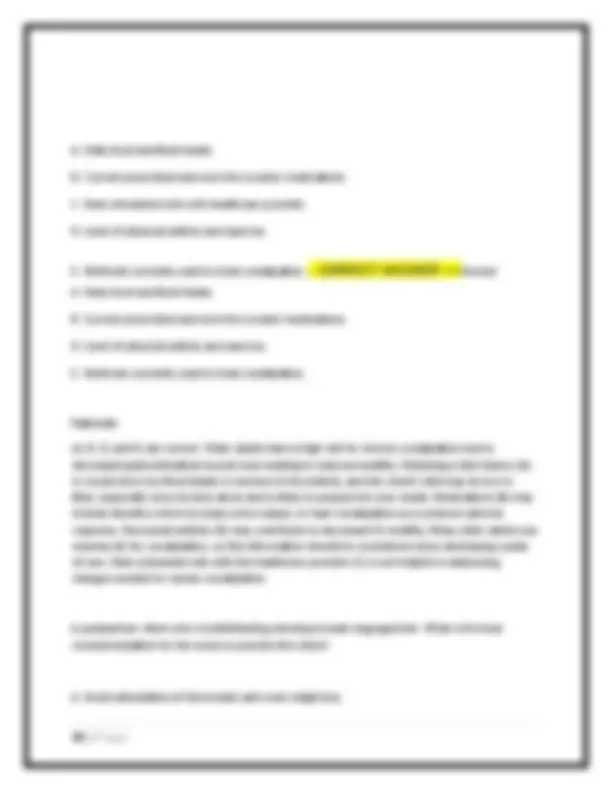
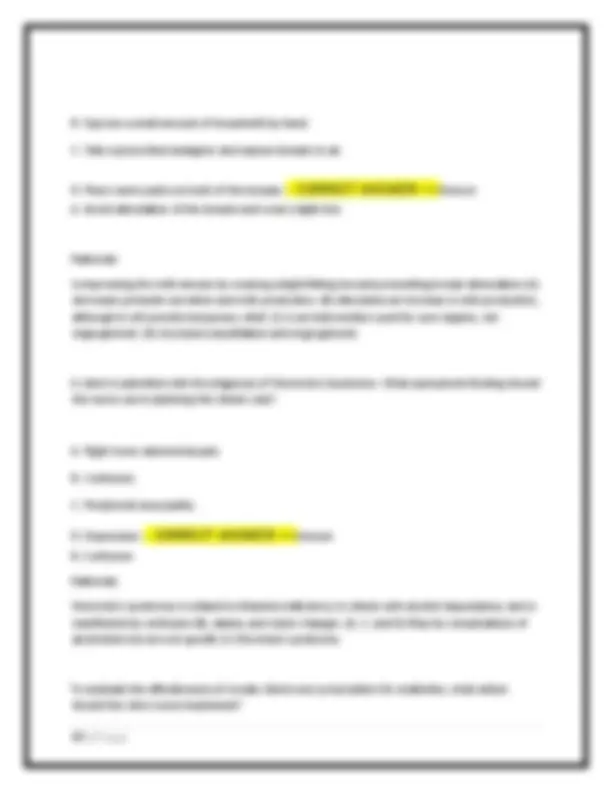
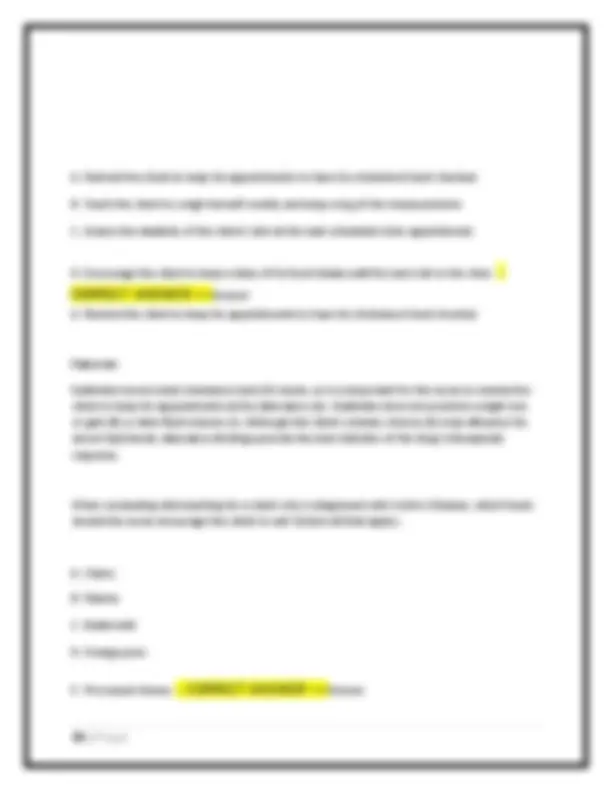
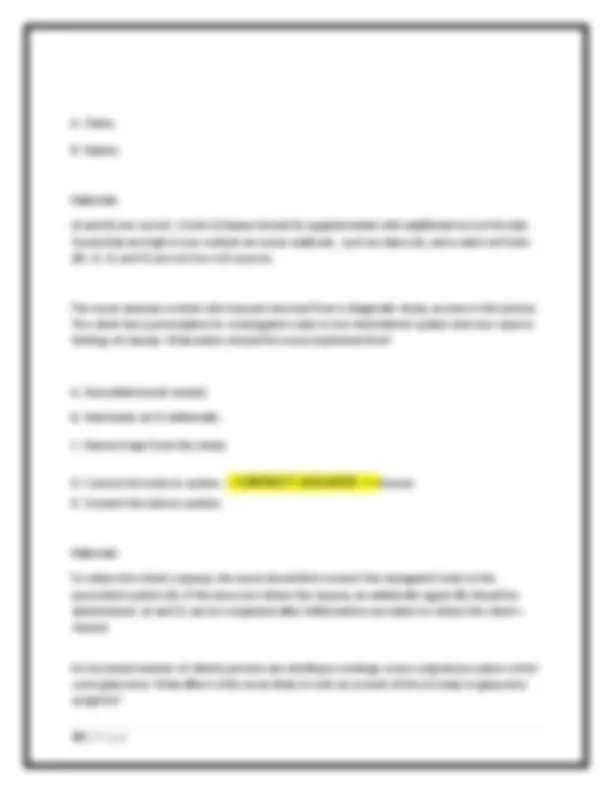
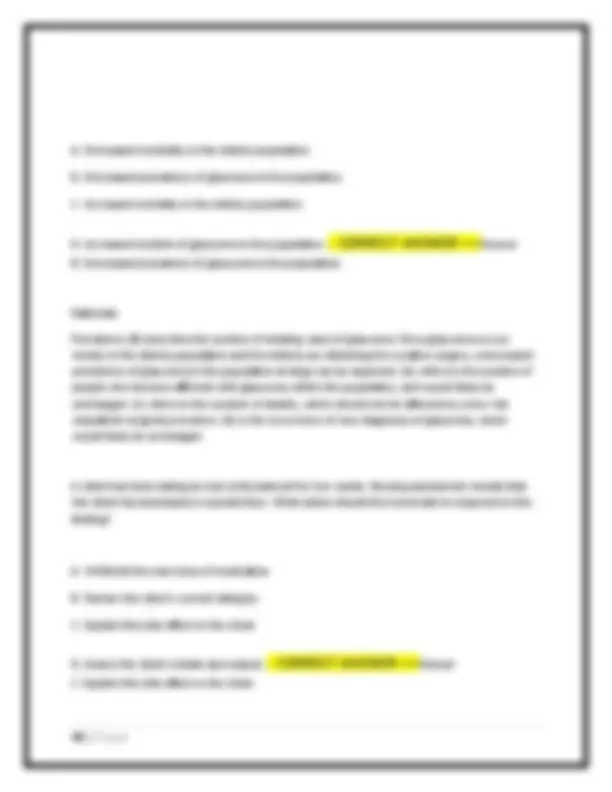
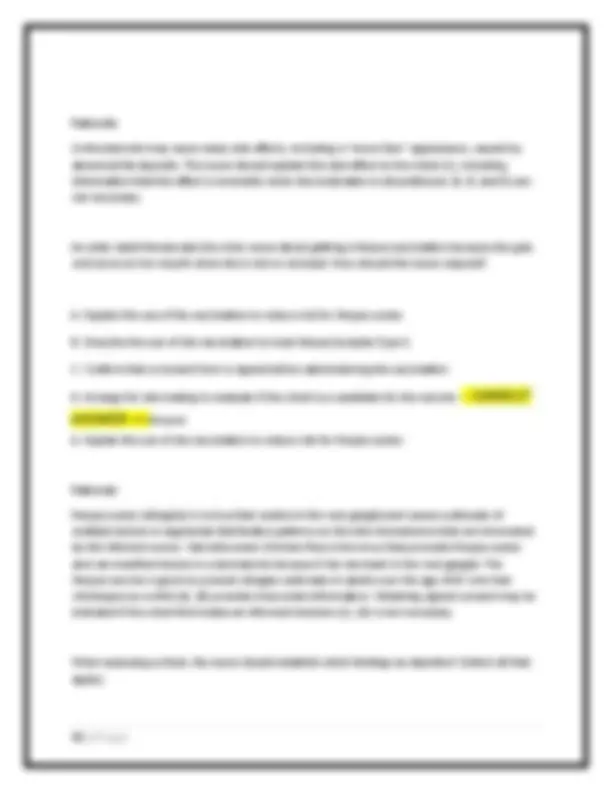
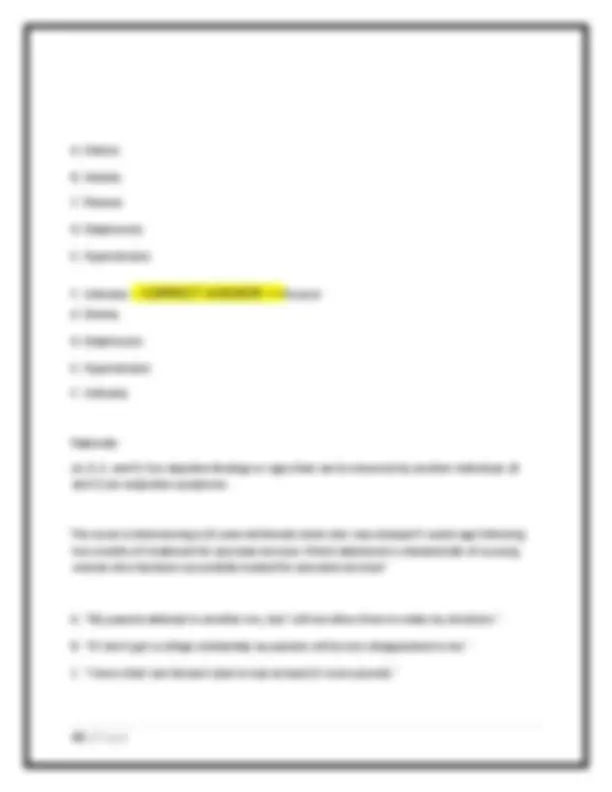
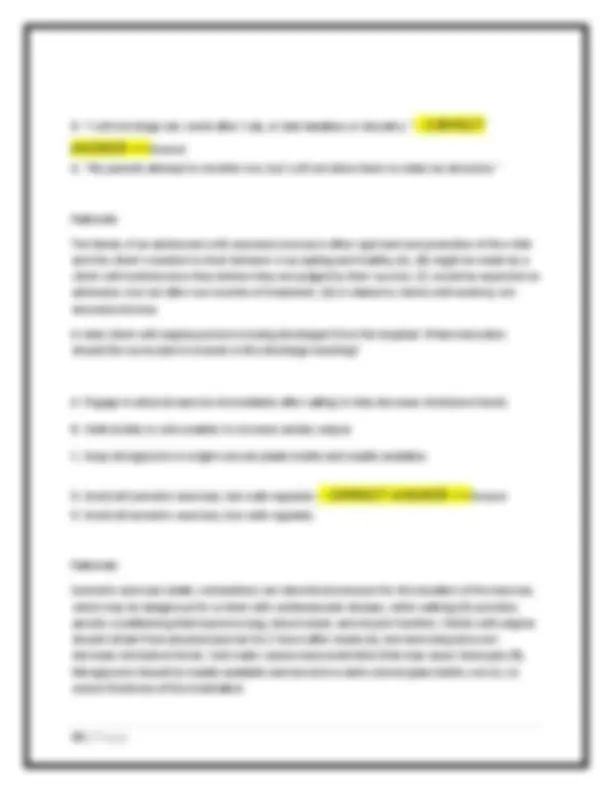
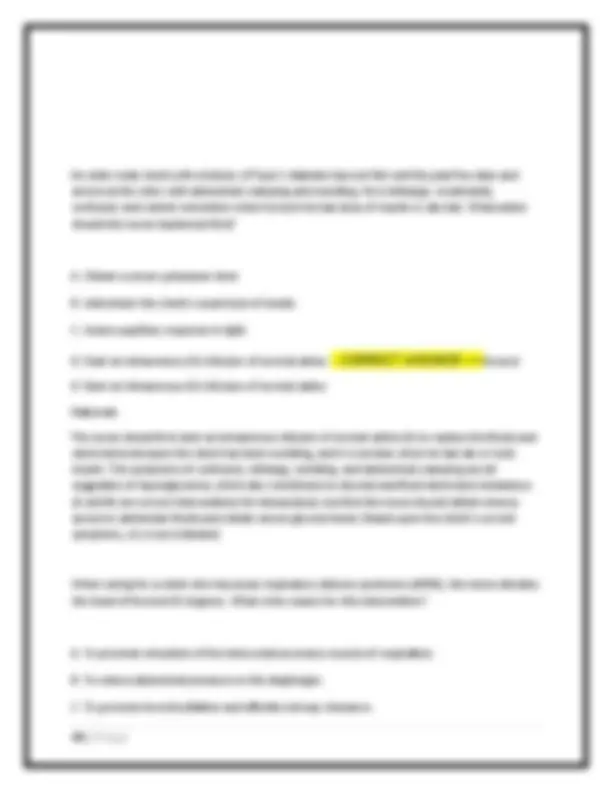
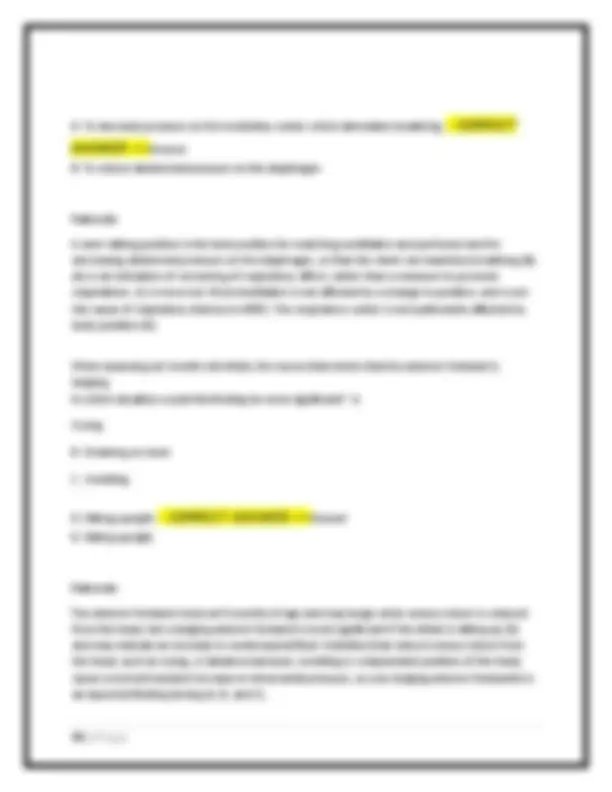
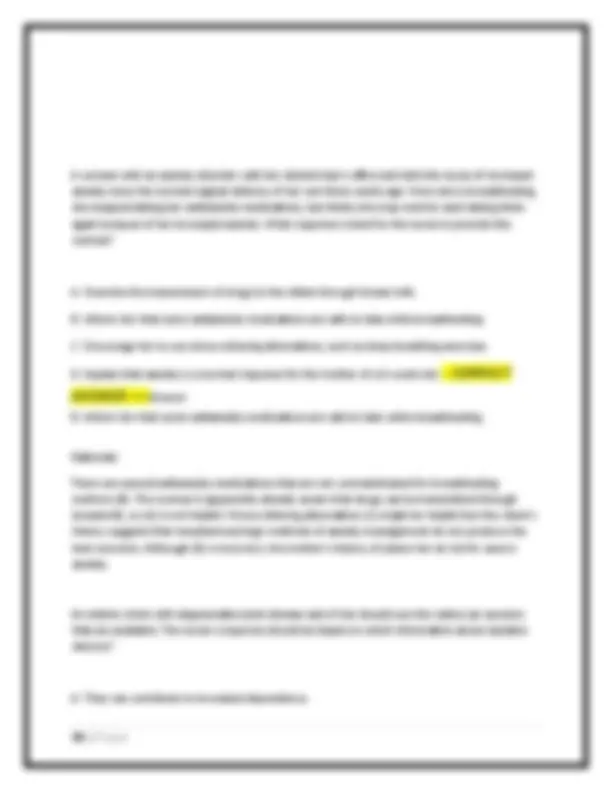
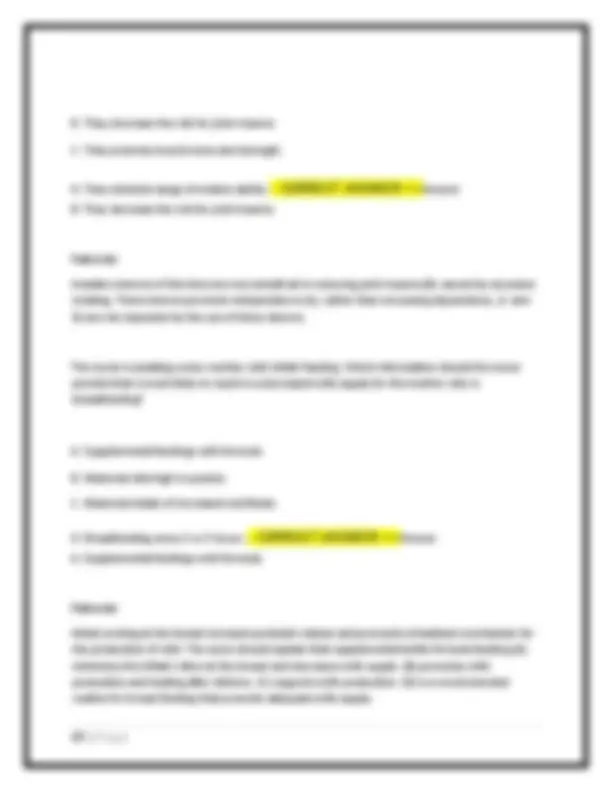
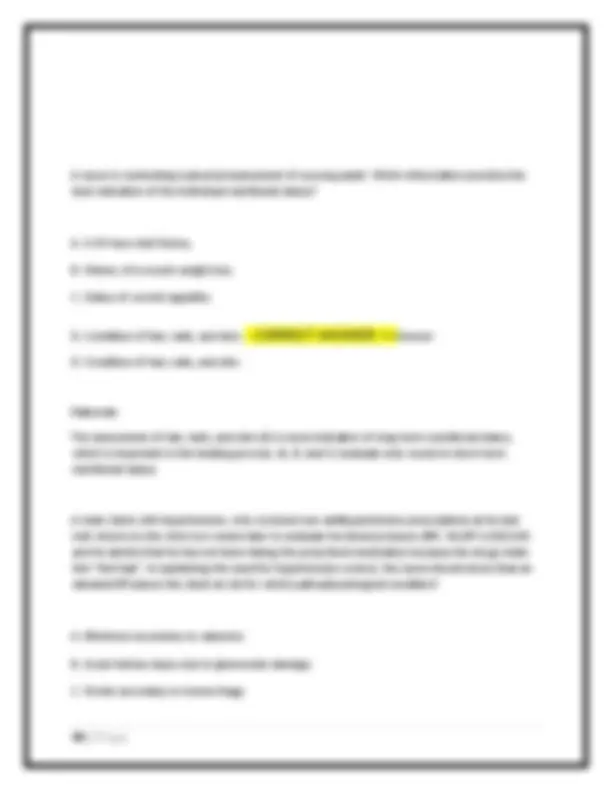
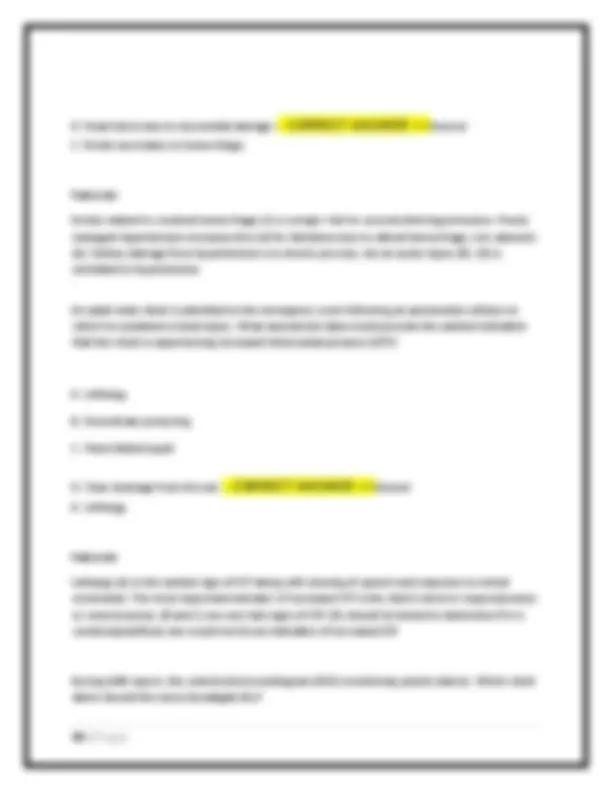
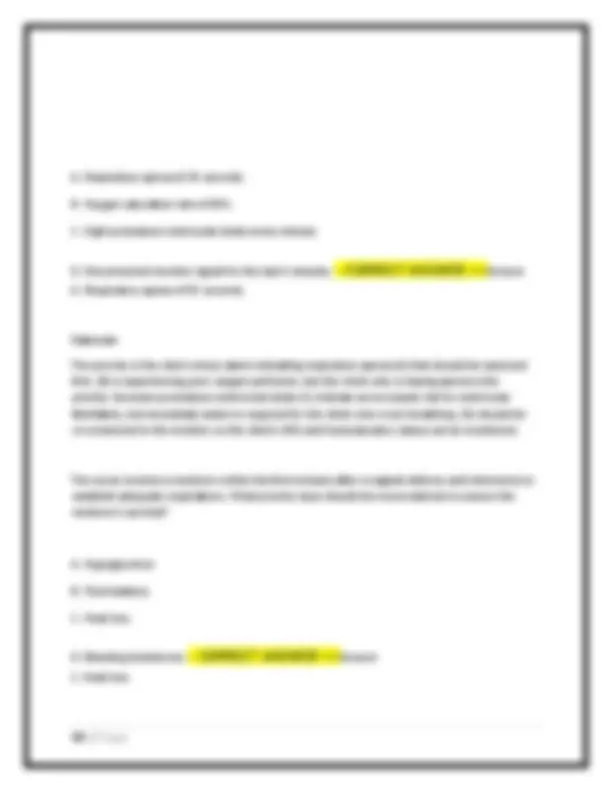
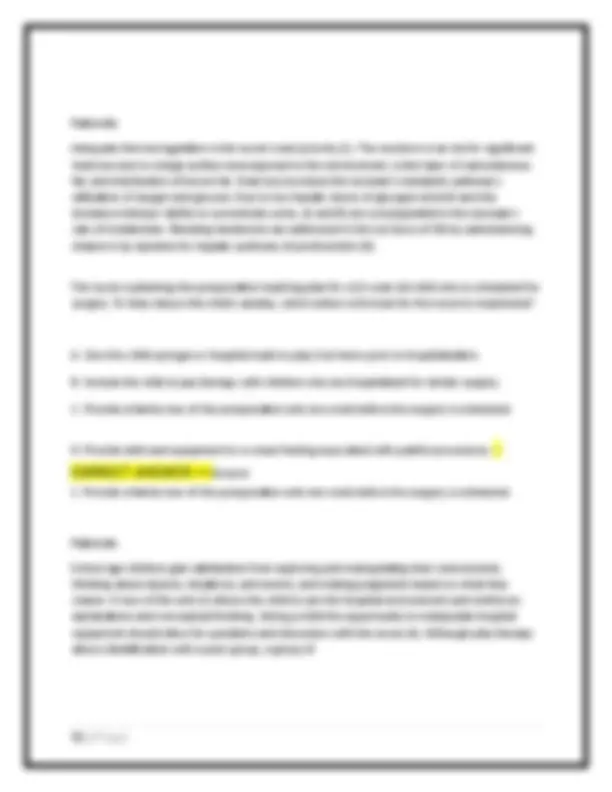
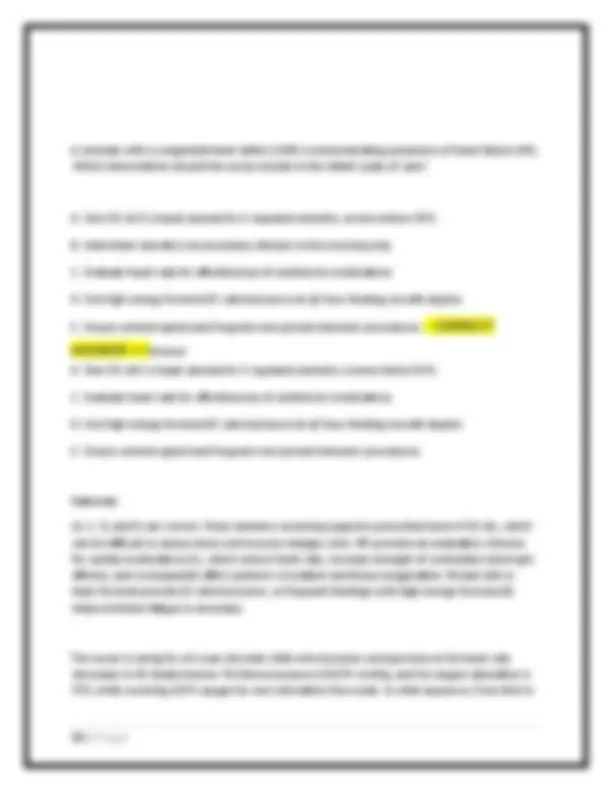
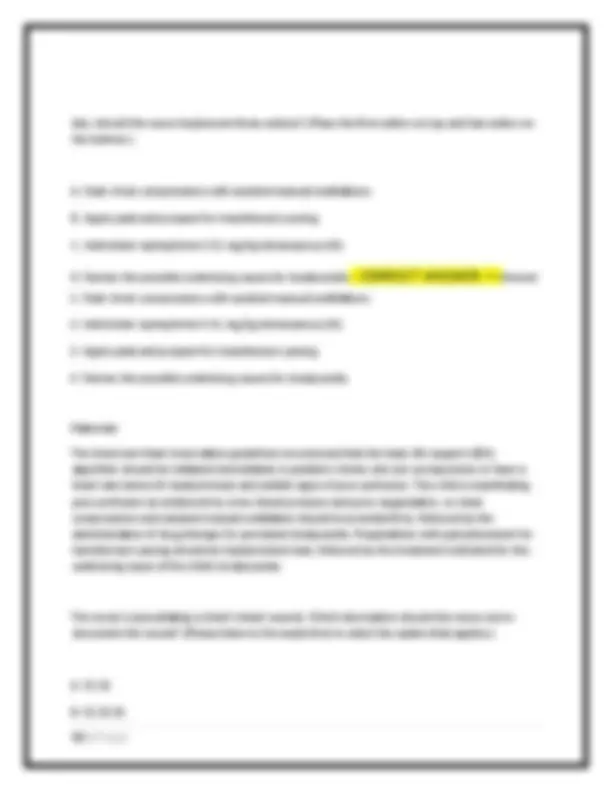
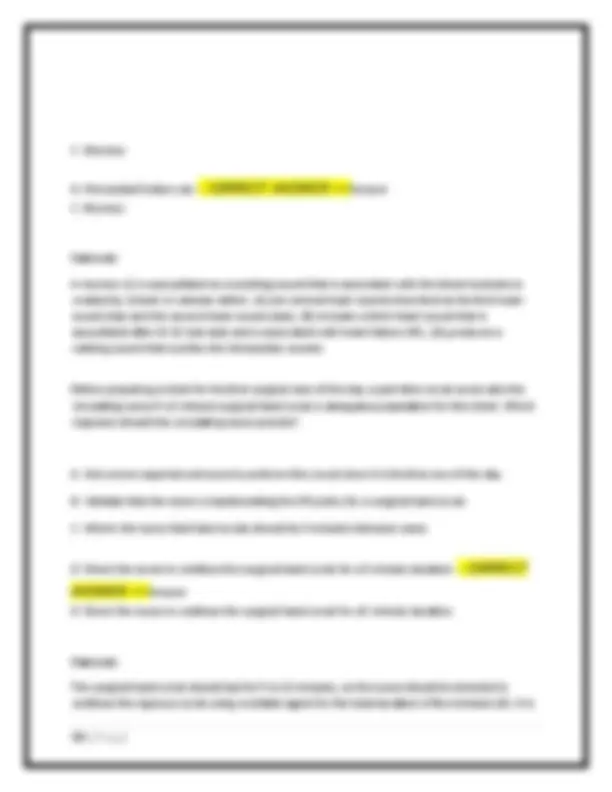
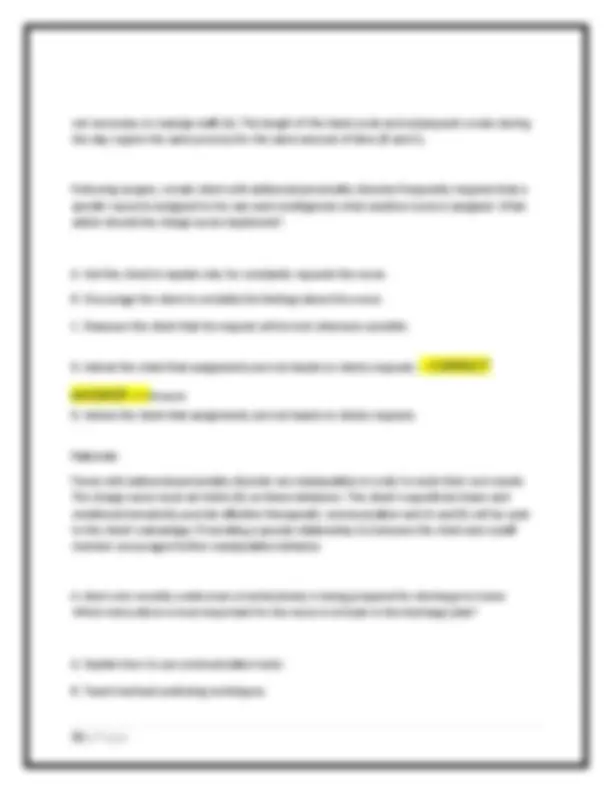
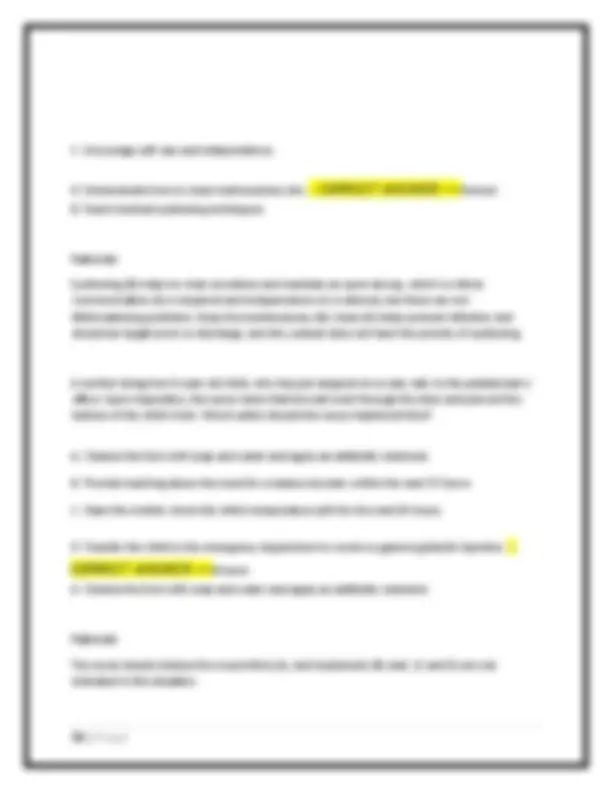
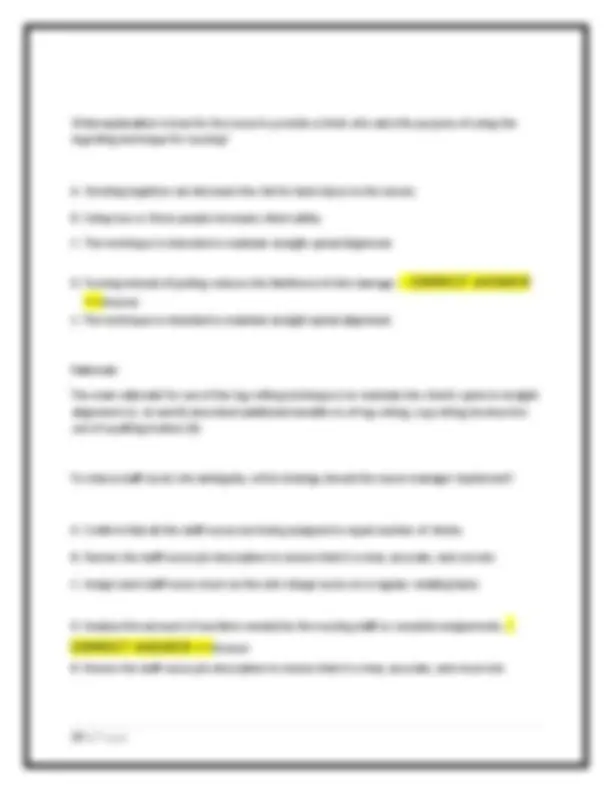
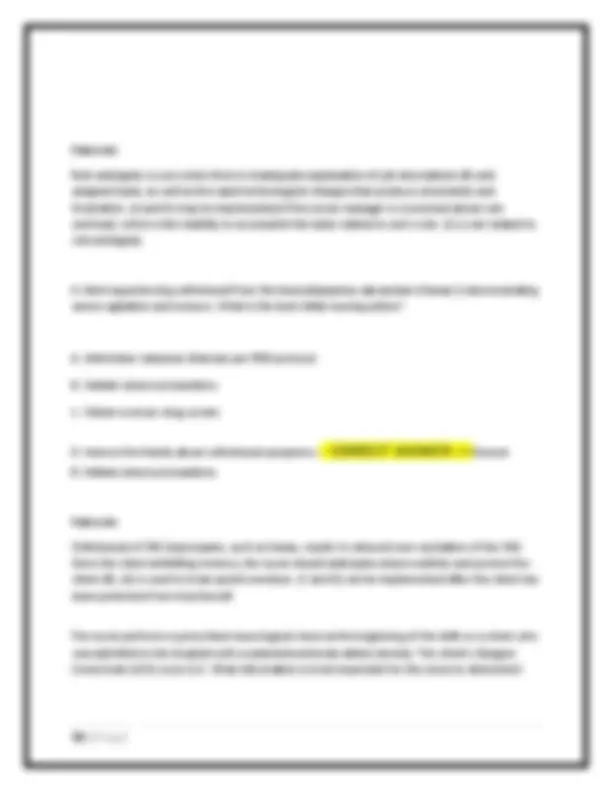
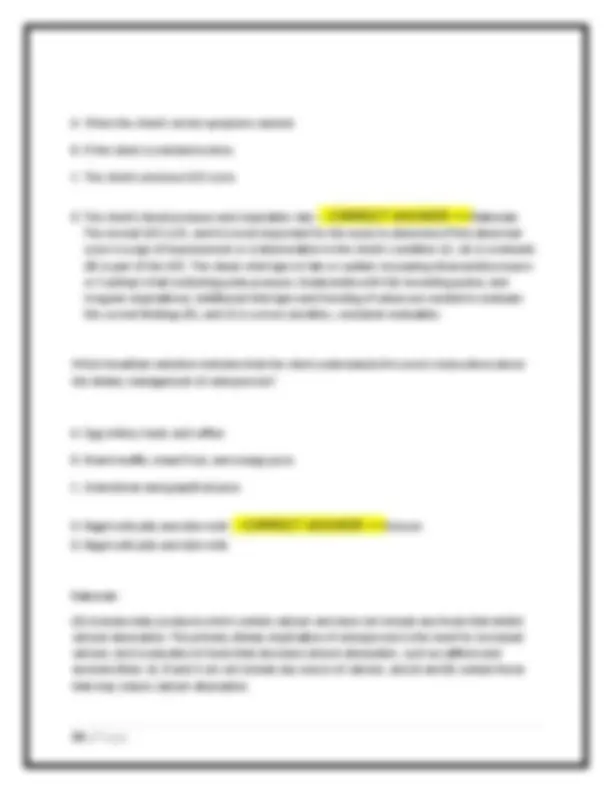
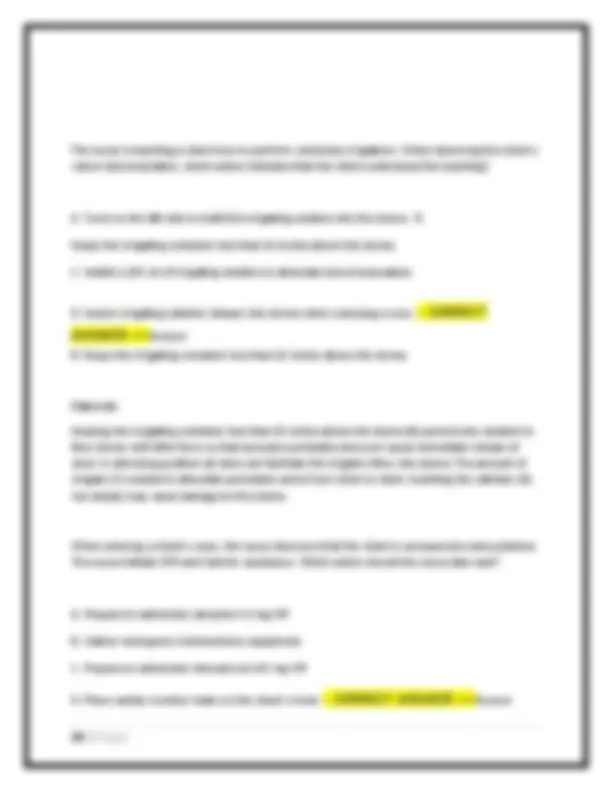
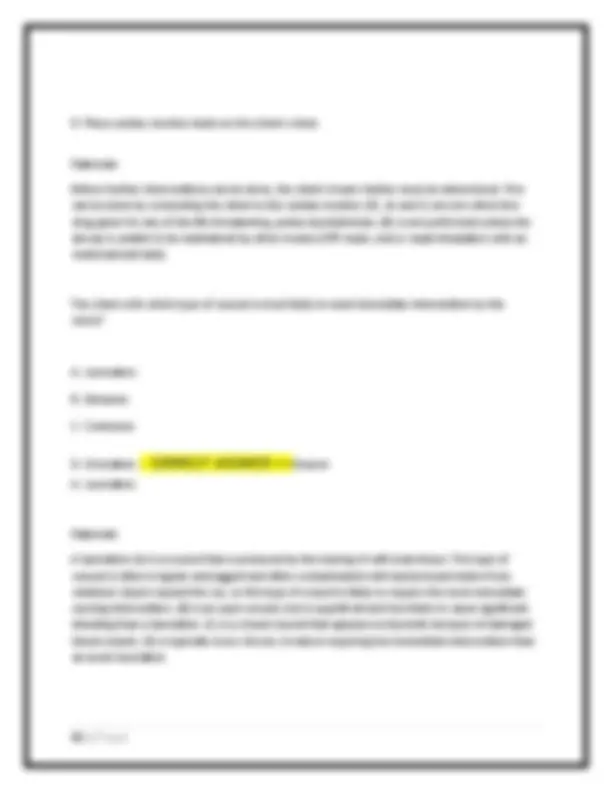
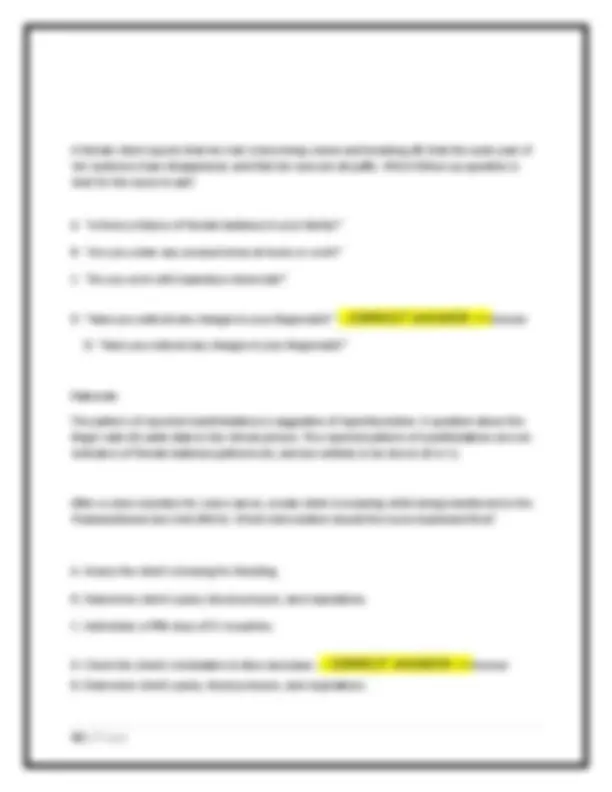
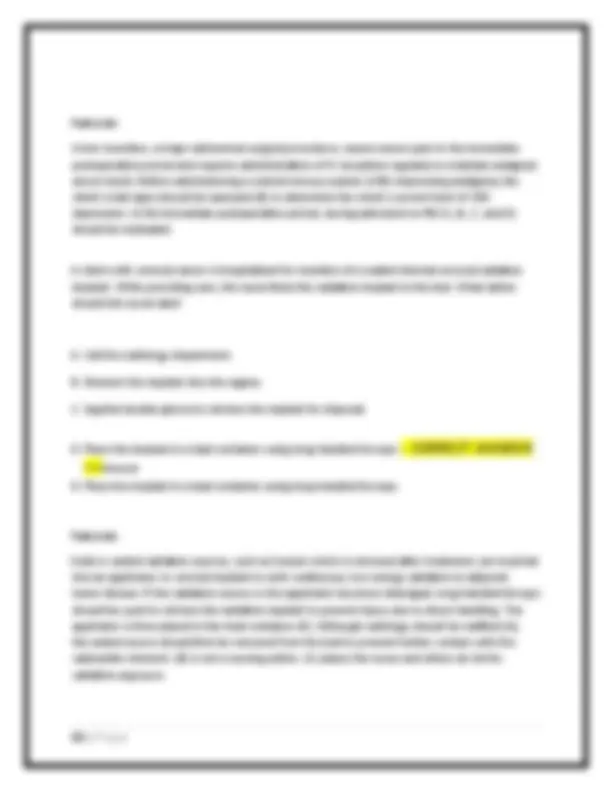
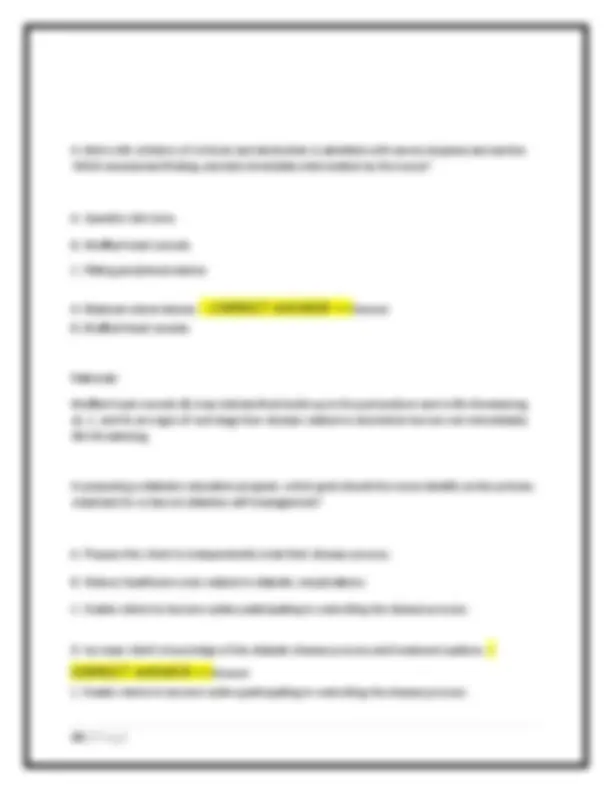
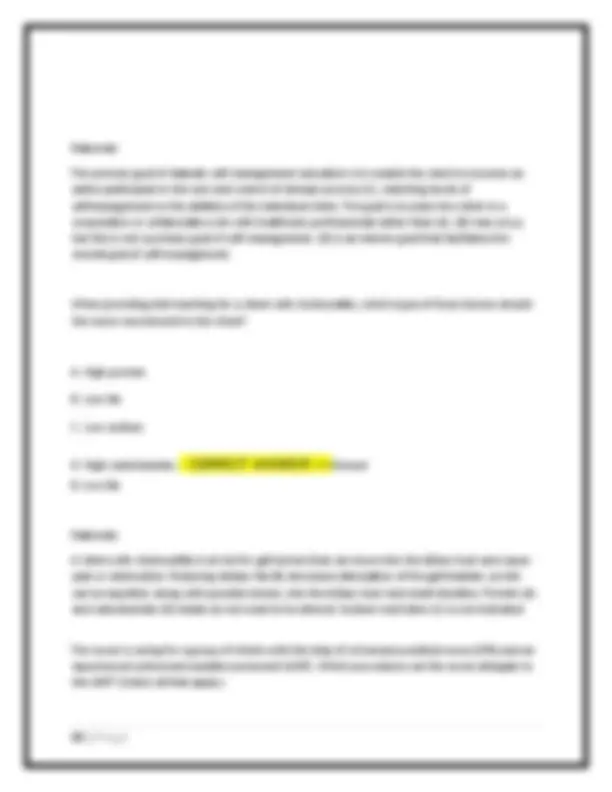
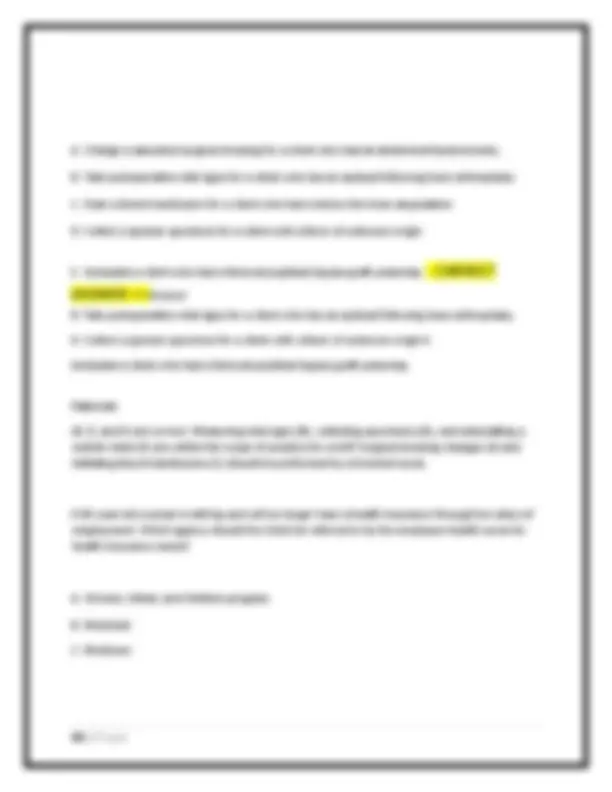
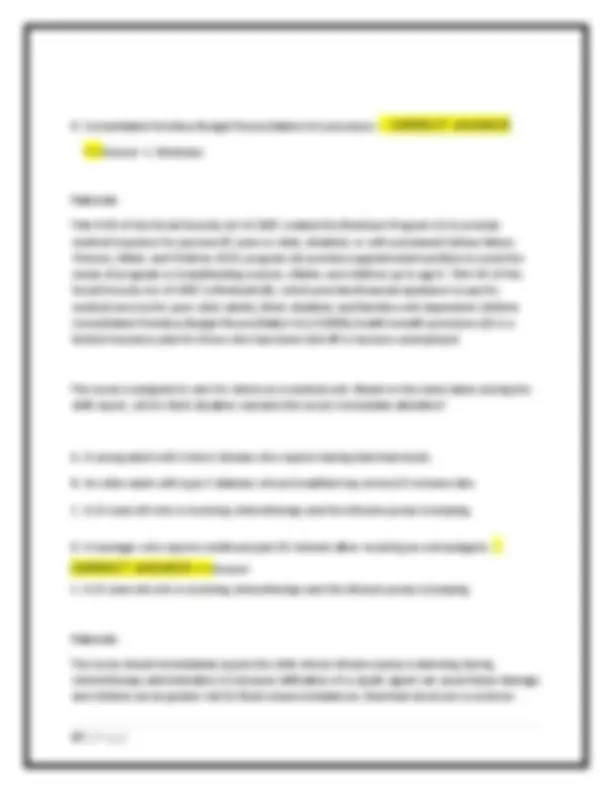
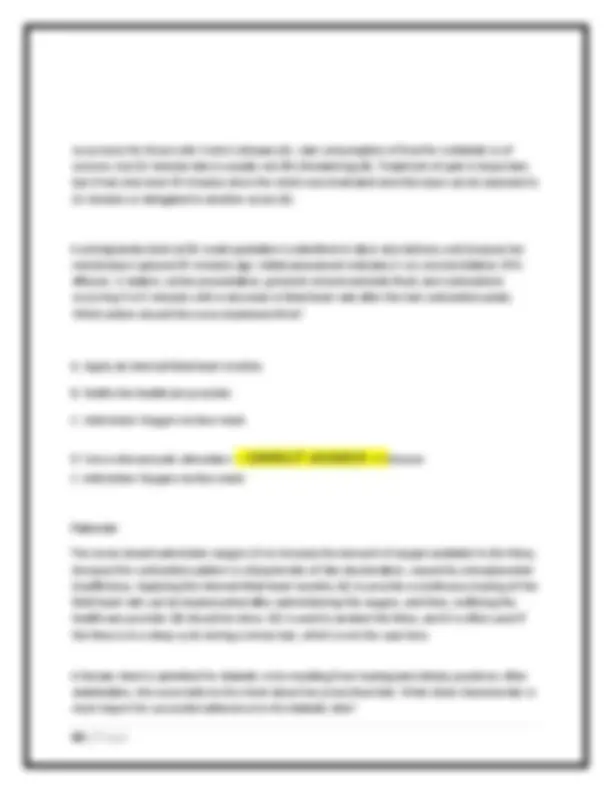
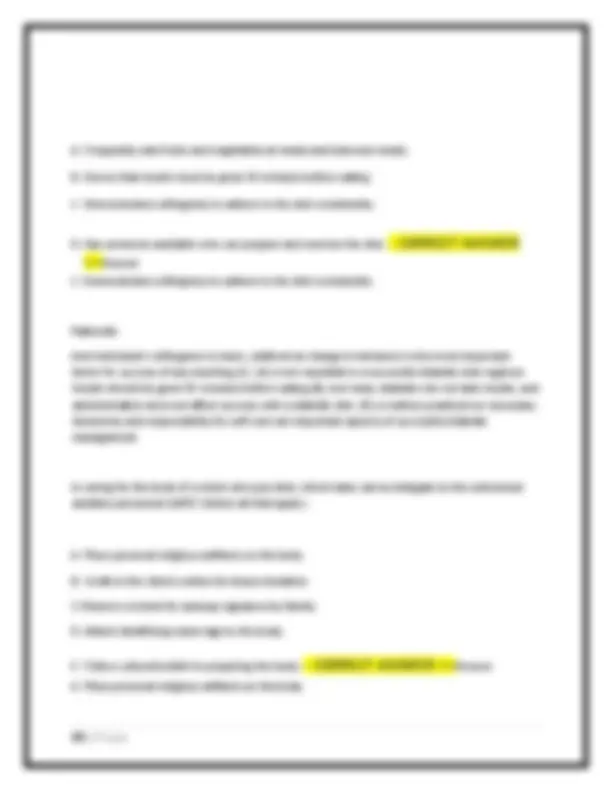
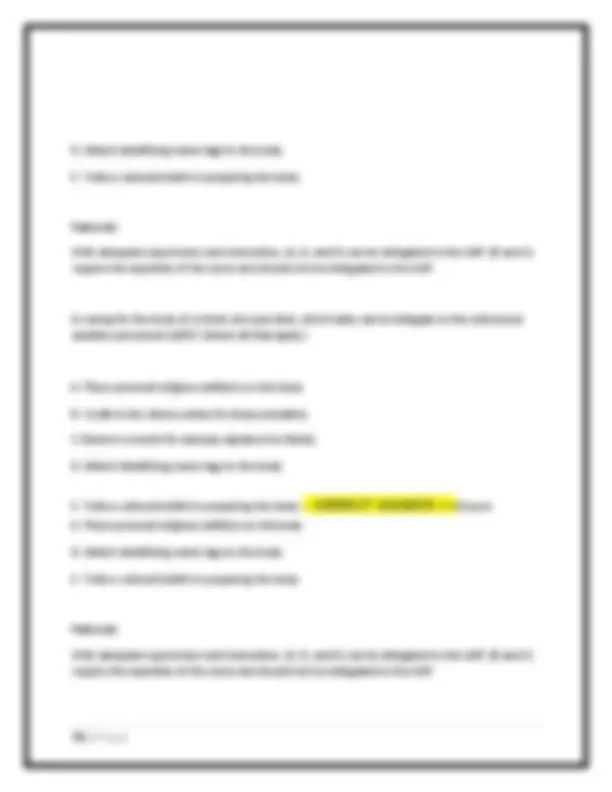
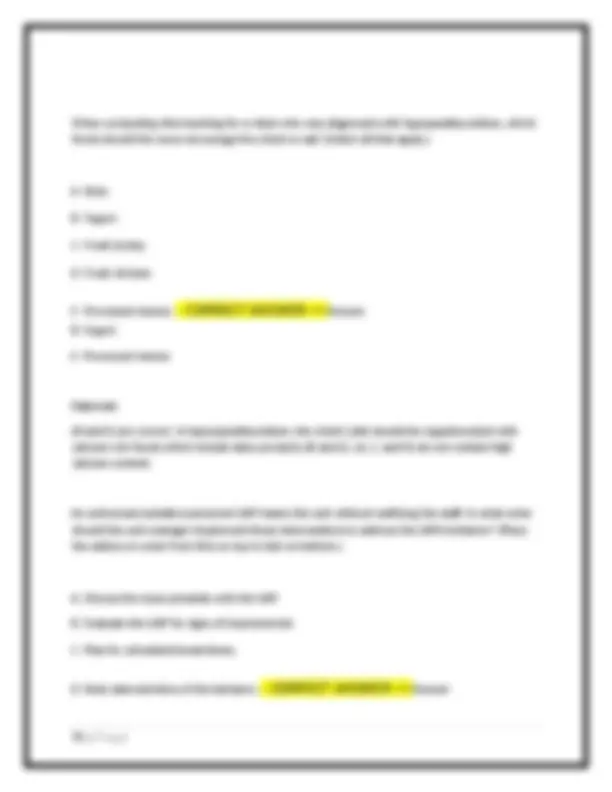
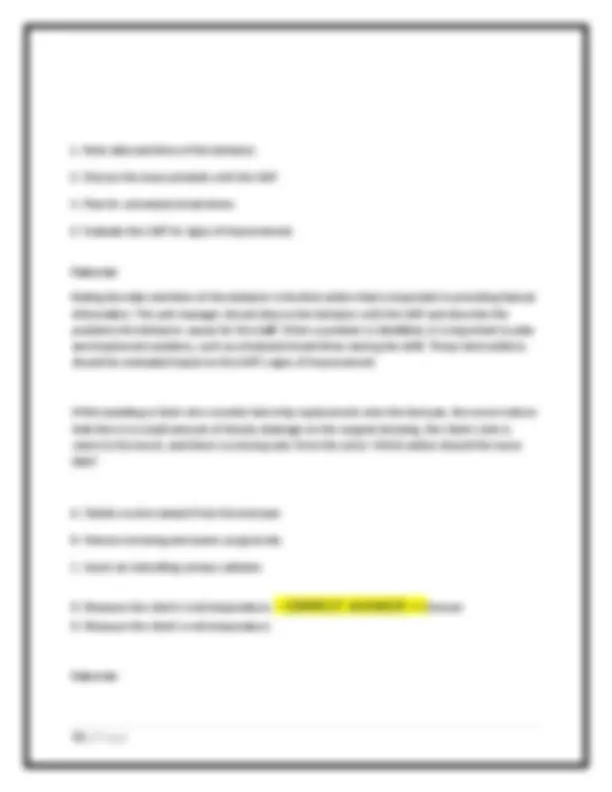
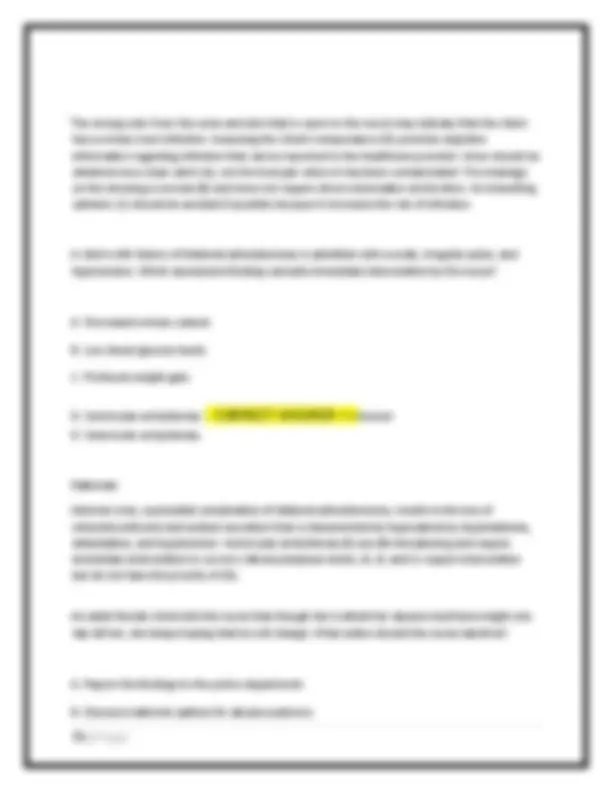
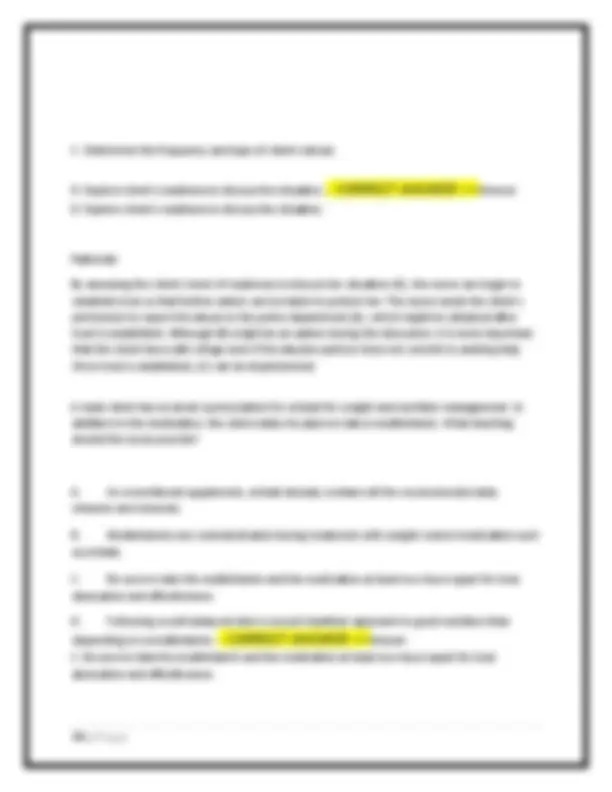
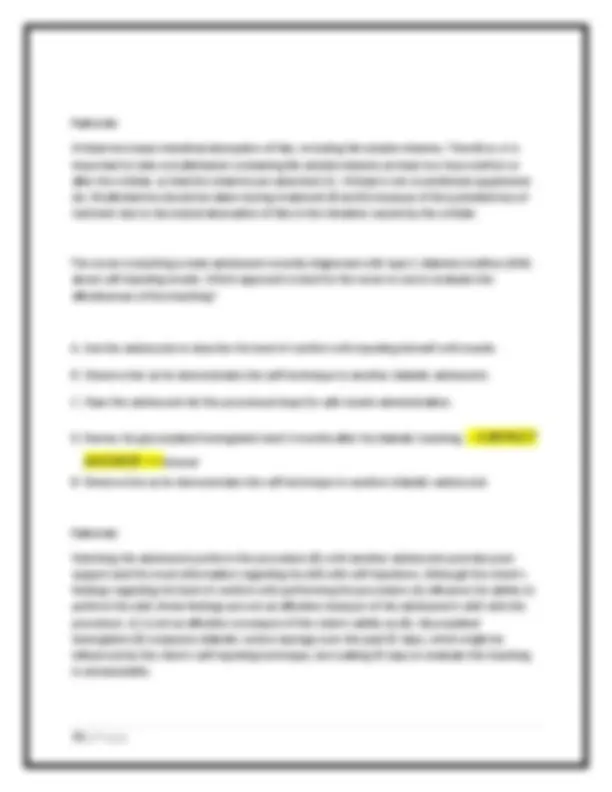
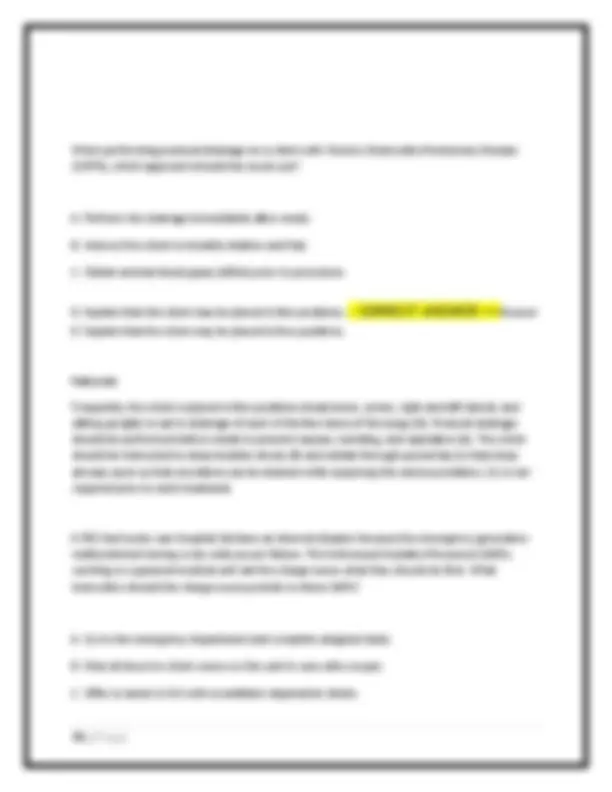
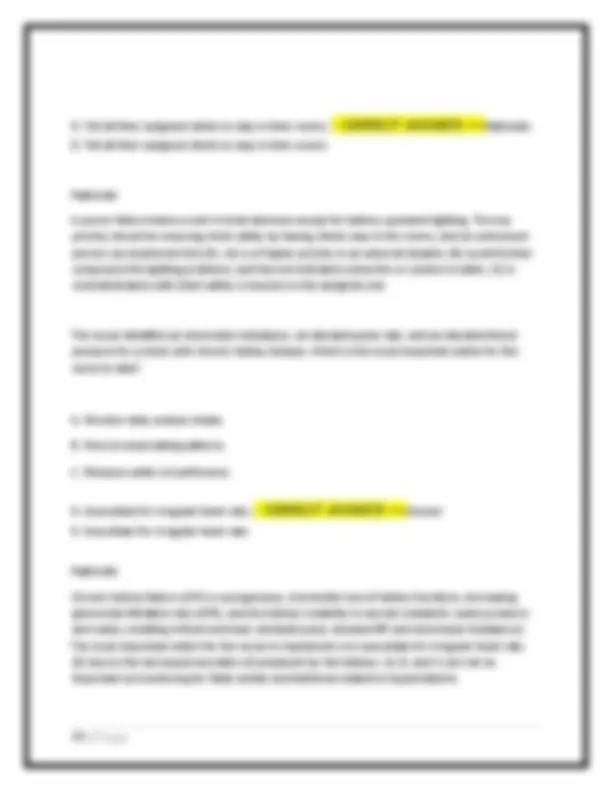
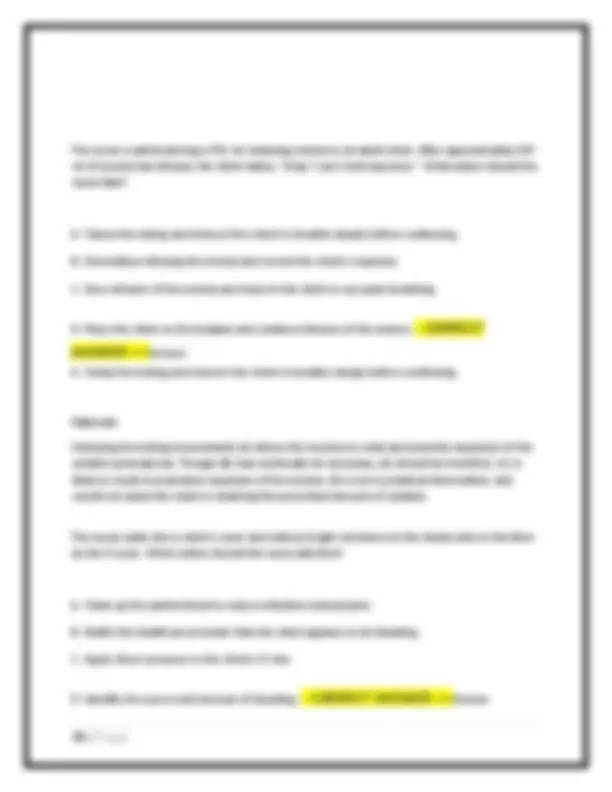
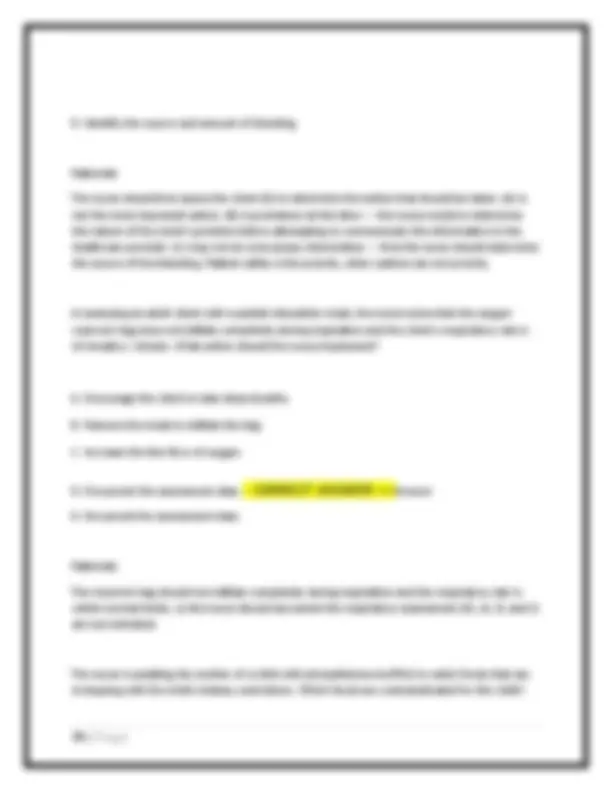
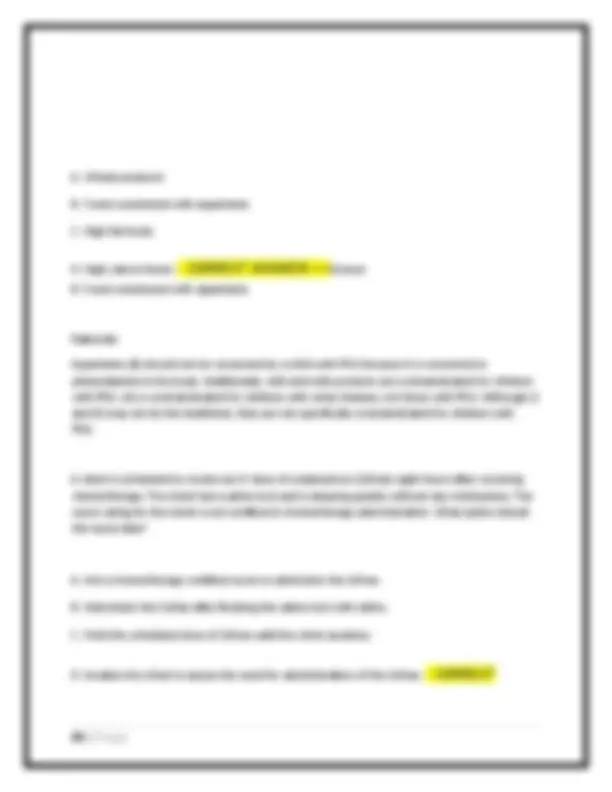
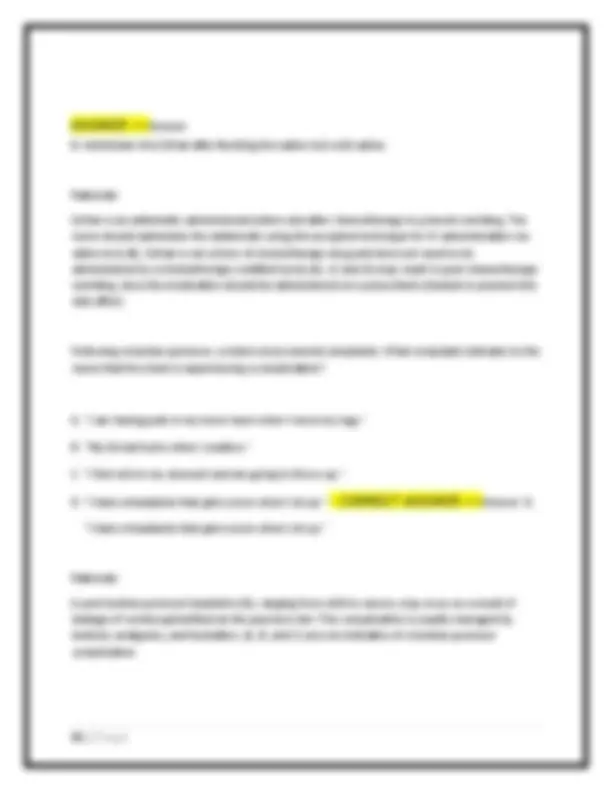
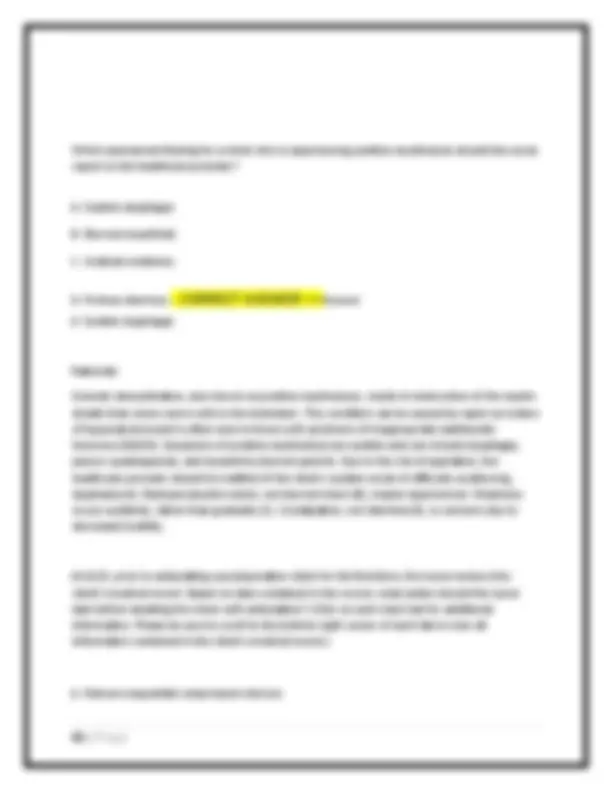
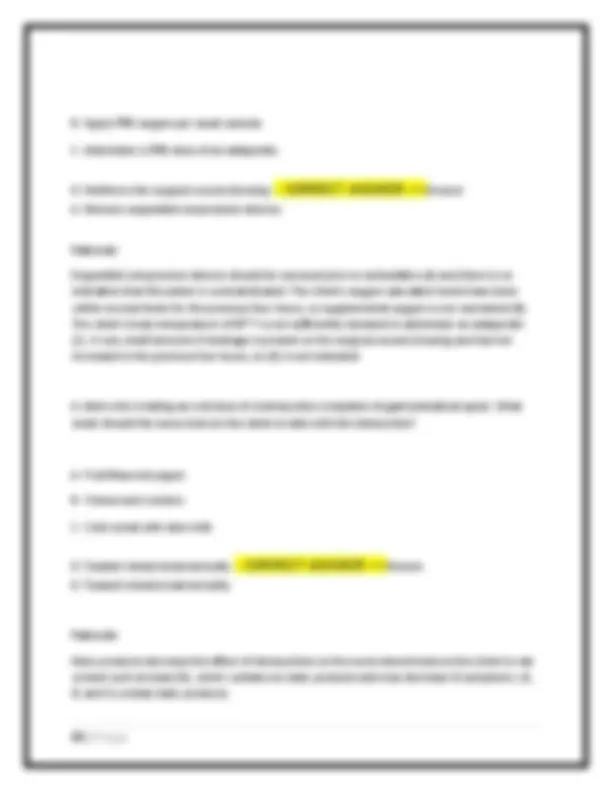
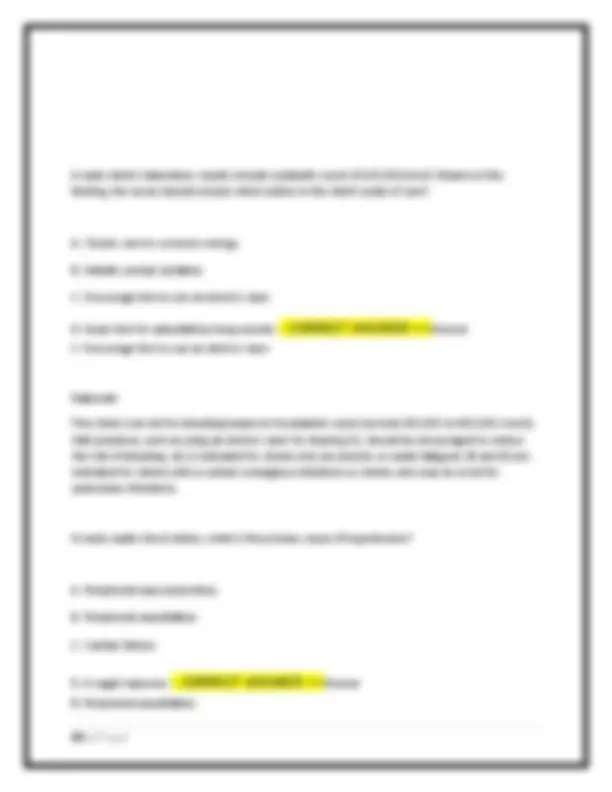
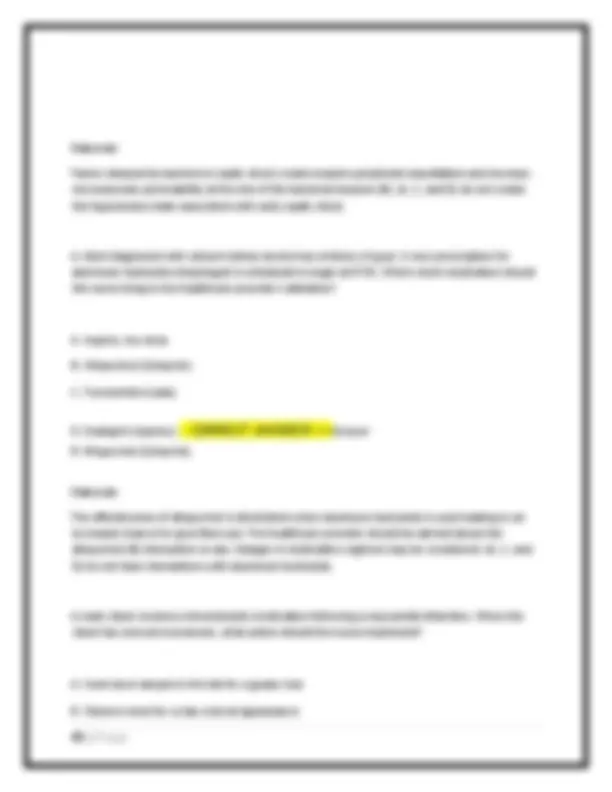
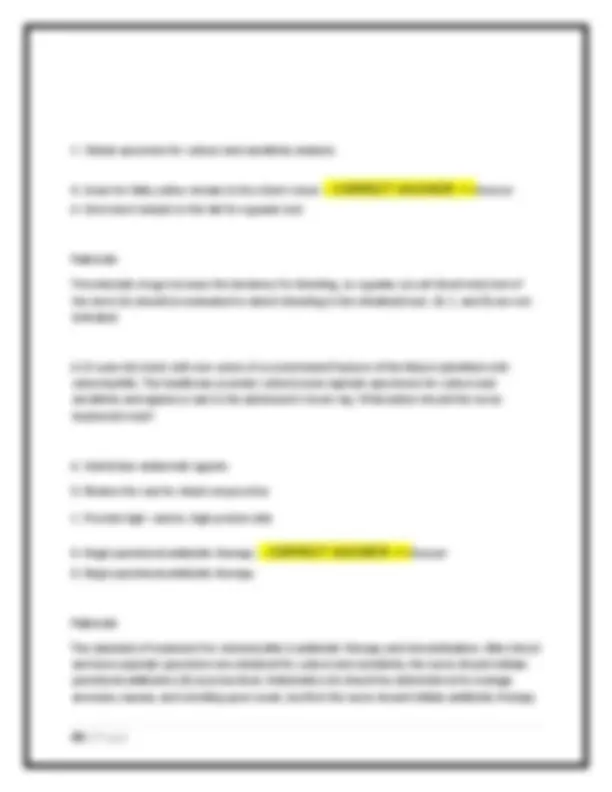
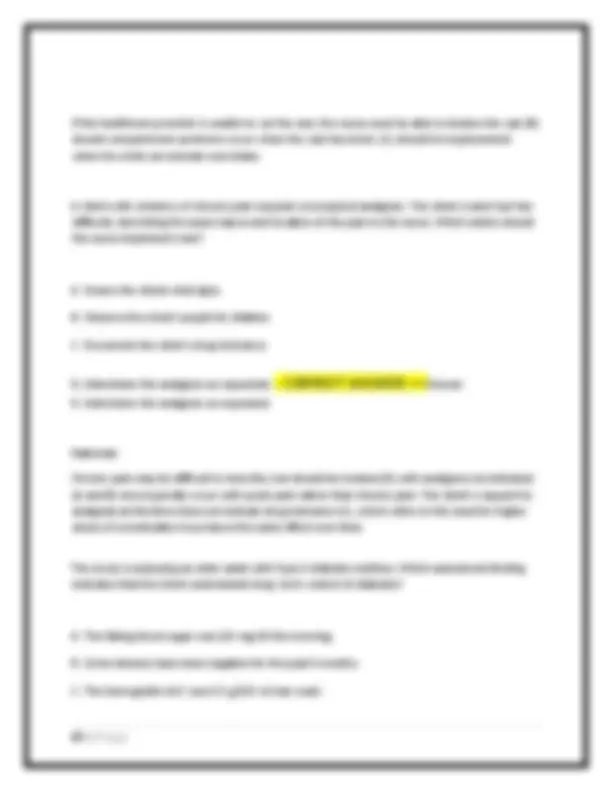
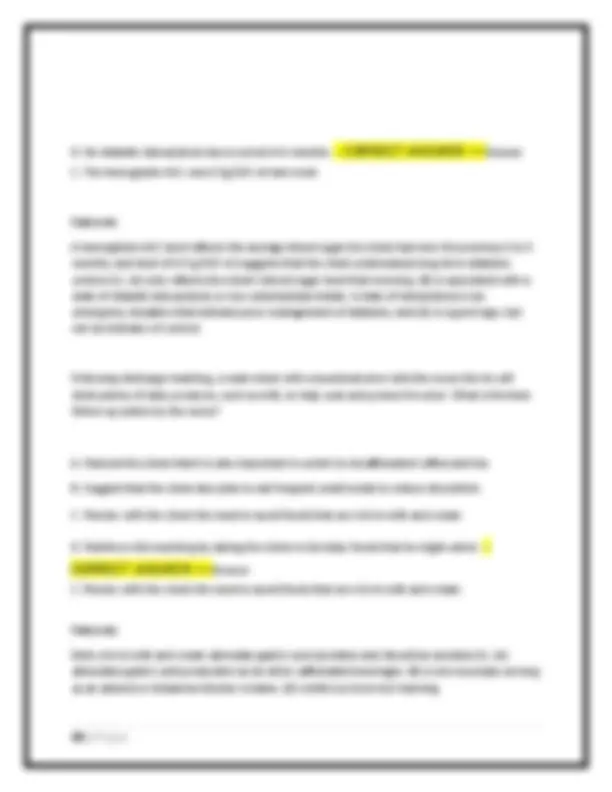
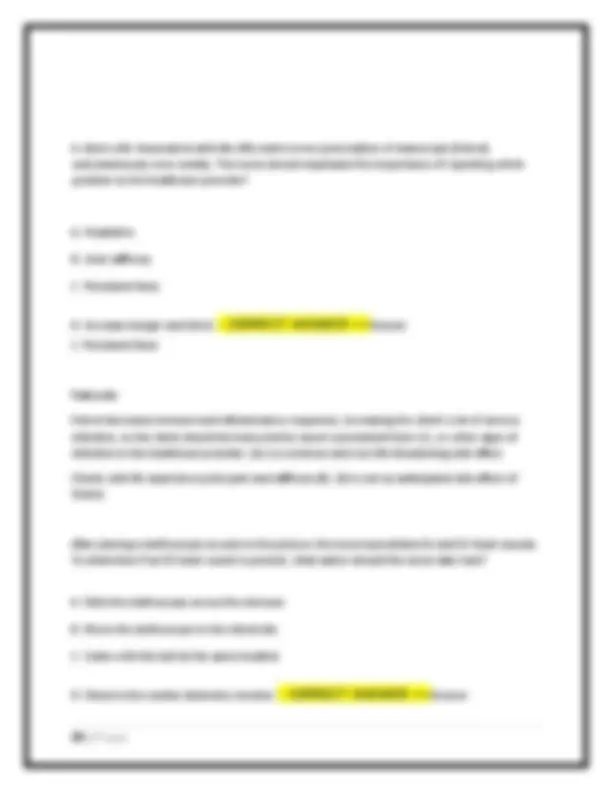
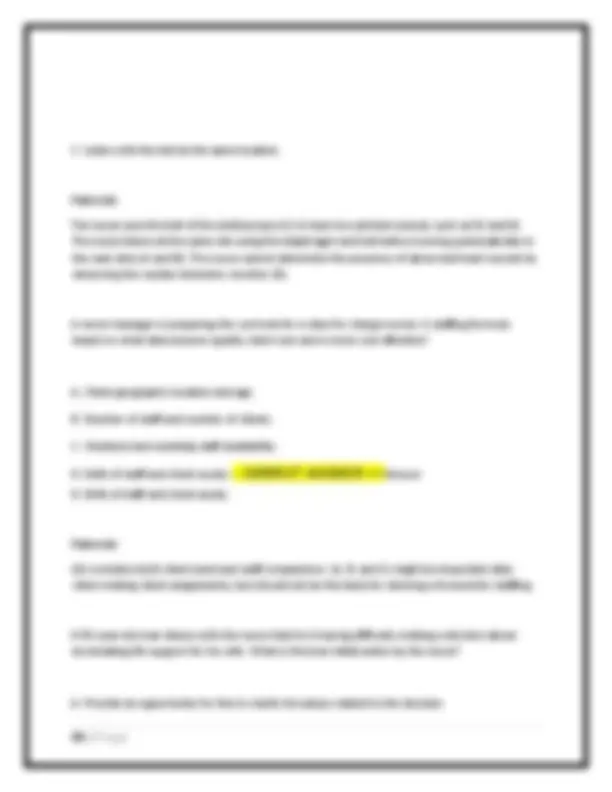
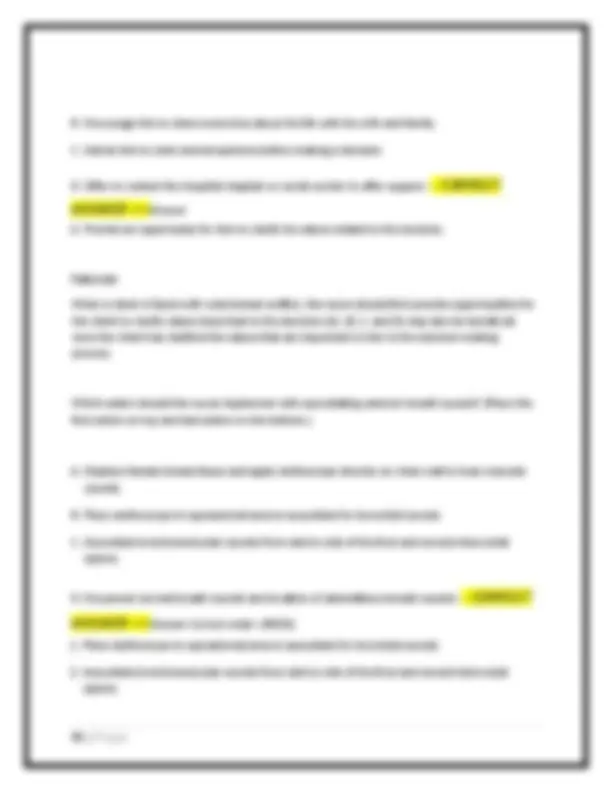
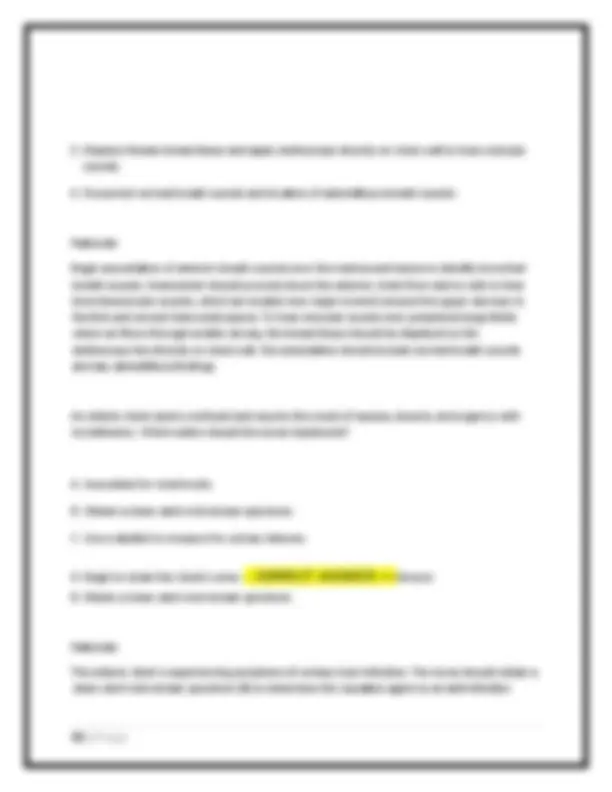
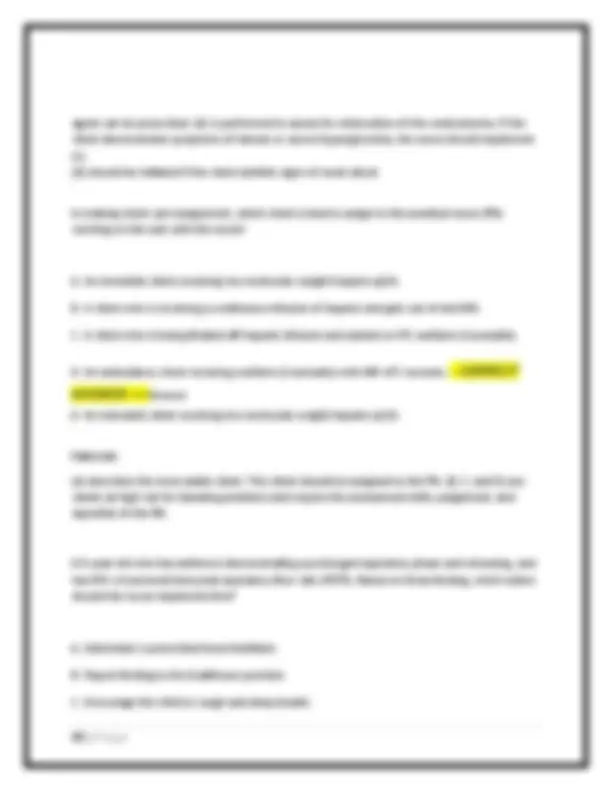
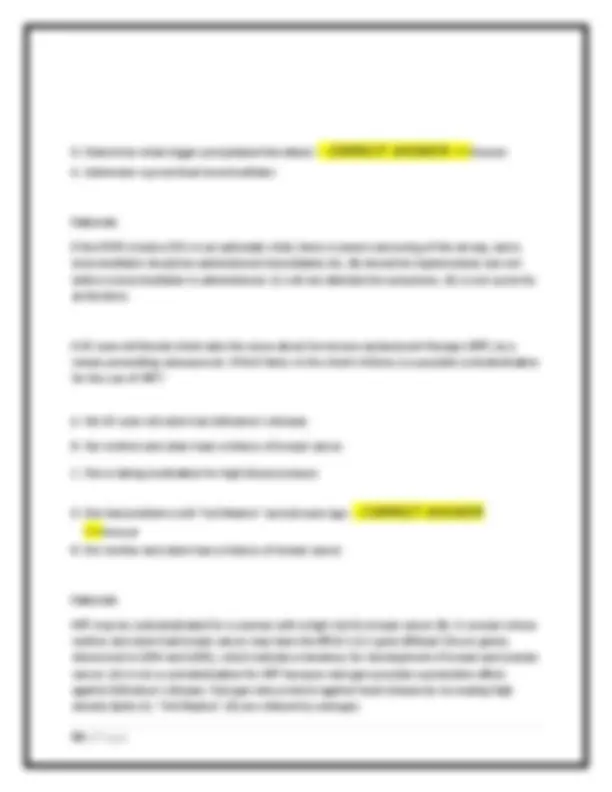
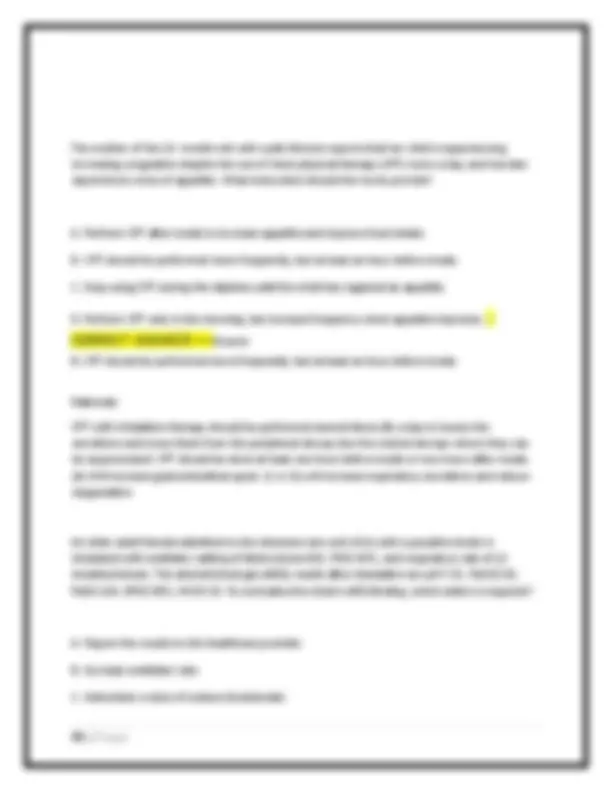
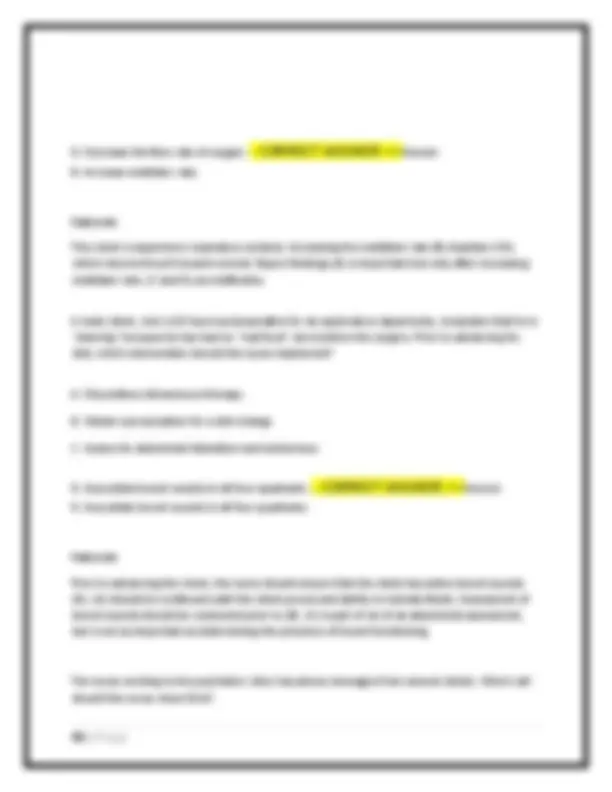
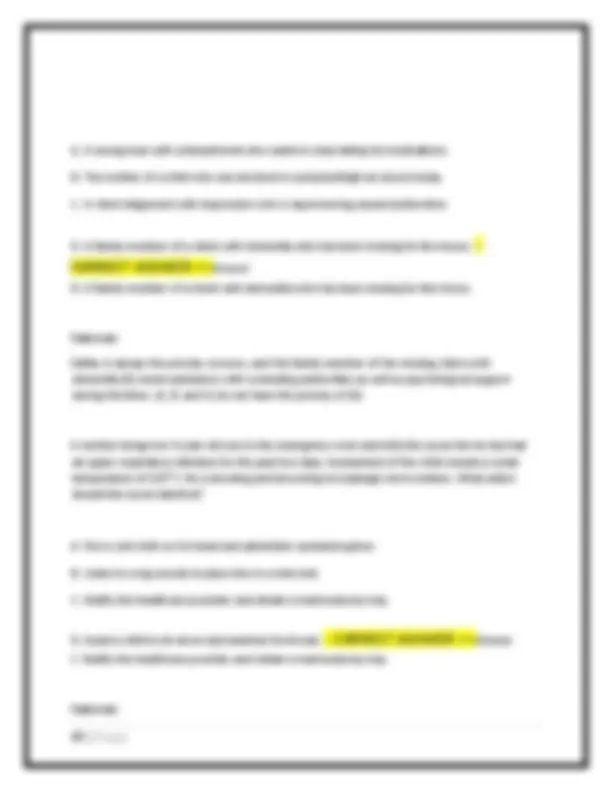
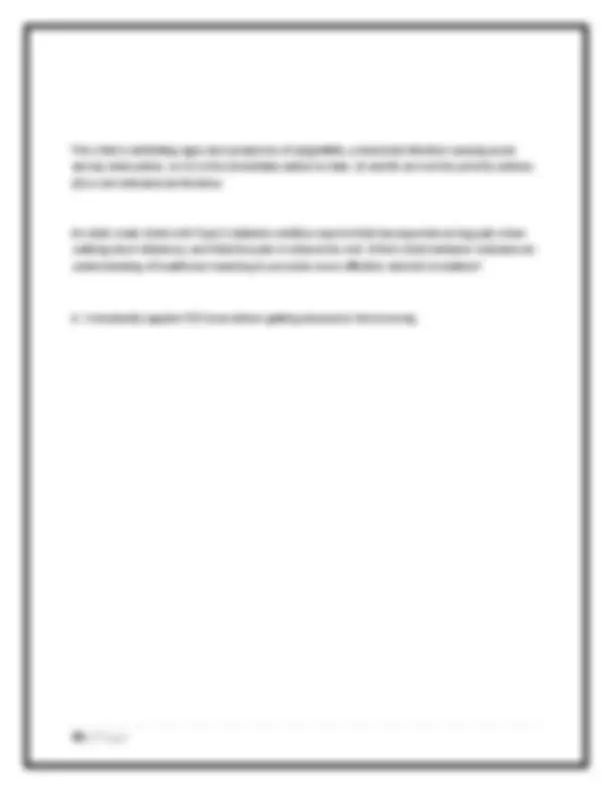
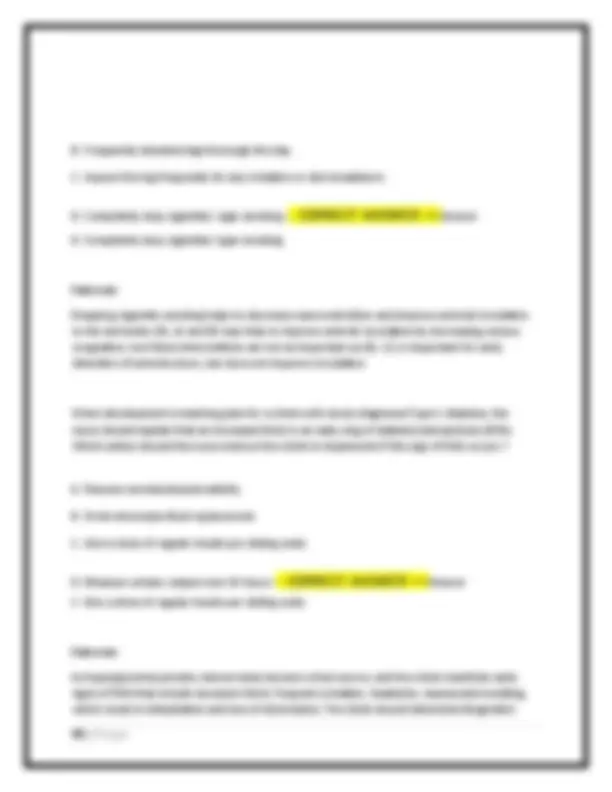
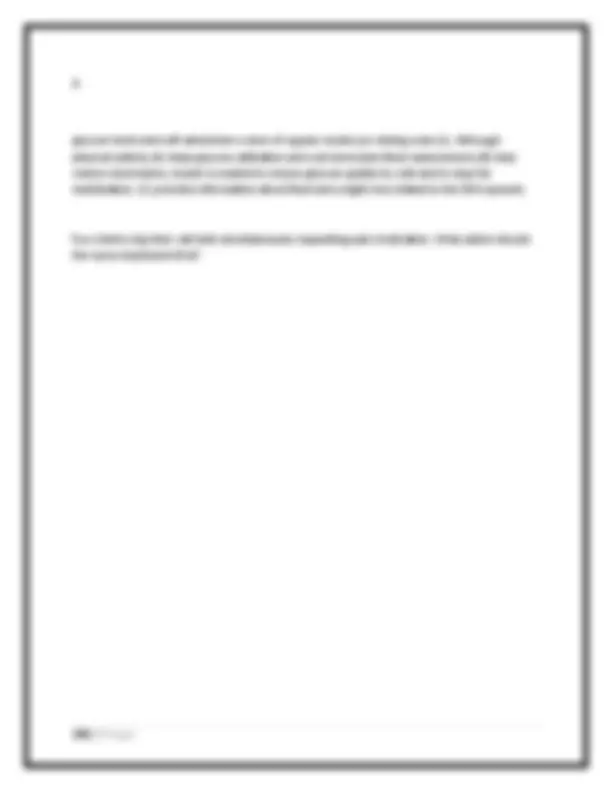


Study with the several resources on Docsity

Earn points by helping other students or get them with a premium plan


Prepare for your exams
Study with the several resources on Docsity

Earn points to download
Earn points by helping other students or get them with a premium plan
Community
Ask the community for help and clear up your study doubts
Discover the best universities in your country according to Docsity users
Free resources
Download our free guides on studying techniques, anxiety management strategies, and thesis advice from Docsity tutors
HESI 366 RN MIDTERM HESI PROCTORED ACTUAL EXAM 2025 NEWEST VERSION 2025 WITH COMPLETE SOLUTION 100% VERIFIED ANSWERS A+ GRADED The healthcare provider prescribes methylergonovine maleate for a postpartum client with uterine atony. What findings should indicate to the nurse to withhold the next dose of the medication? A. Excessive lochia. B. Saturation of more than one pad per hour. C. Hypertension. D. Difficulty locating the uterine fundus. - CORRECT ANSWER >>>Answer C. Hypertension. Rationale Methylergonovine, an ergot alkaloid, has vasoconstrictive effects that can exaggerate primary hypertension. The nurse should withhold the medication if the client's blood pressure is elevated (C) and notify the healthcare provider. (A, B, and D) are signs of uterine atony and are indications for the use of the medication.
Typology: Exams
1 / 116

This page cannot be seen from the preview
Don't miss anything!





























































































The healthcare provider prescribes methylergonovine maleate for a postpartum client with uterine atony. What findings should indicate to the nurse to withhold the next dose of the medication? A. Excessive lochia. B. Saturation of more than one pad per hour. C. Hypertension.
C. Hypertension. Rationale Methylergonovine, an ergot alkaloid, has vasoconstrictive effects that can exaggerate primary hypertension. The nurse should withhold the medication if the client's blood pressure is elevated (C) and notify the healthcare provider. (A, B, and D) are signs of uterine atony and are indications for the use of the medication. The nurse has completed the diet teaching of a male client who is being discharged following treatment of a leg wound. A high protein diet is encouraged to promote wound healing. Which lunch choice by the client indicates that the teaching was effective?
A. A peanut butter sandwich with soda and cookies. B. A tunafish sandwich with chips and ice cream. C. A salad with three kinds of lettuce and fruit.
B. A tunafish sandwich with chips and ice cream. Rationale (B) contains the highest amount of protein. Four ounces of tuna contains 11 g of protein, and ice cream 5 g of protein per cup. Chips are a fat with virtually no protein value. (A) contains 4 grams of protein per tablespoon. (C) contains only 1 gram of protein per 1 cup serving. (D) may have beef flavoring but it consist mostly of vegetables and would therefore be low in protein. The nurse discontinues a continuous IV heparin infusion for a male client on strict bed rest, and is now preparing to administer the client's first dose of in enoxaparin (Lovenox). Prior to giving this subcutaneous injection, which assessment finding requires additional intervention by the nurse? A. Current lab report indicates an aPTT at 1.5 times the client's control. B. Several bruised areas are noted on the client's upper extremities bilaterally. C. The client states that his right calf is aching, and wants pain medication.
C. The client states that his right calf is aching, and wants pain medication.
C. Have the hospital's medical-legal department meet with the client.
B. Request a multidisciplinary care conference to discuss husband's demands. Rationale A multi-disciplinary care conference involves the healthcare team to evaluate difficult situations that conflict with client safety and autonomy. During this conference, the client's wishes regarding her health care decisions can be clarified to all team members. All other options are not indicated. The nurse working in a critical care unit is assigned the care of two clients, one with pneumonia who is being mechanically ventilated and the other who had a thoracotomy yesterday and is complaining of incisional pain. What should the nurse to first? A. Assess the level of consciousness and vital signs for both clients. B. Complete a head to toe assessment of the client with pneumonia. C. Change the surgical dressing to observe the appearance of the incision.
A. Assess the level of consciousness and vital signs for both clients. Rationale Assessing the level of consciousness and vital signs for both clients (A) provides a quick measurement of priority need. Before a complete assessment (B) is done on one client, the nurse should at least do a quick assessment of the other client. Changing the dressing and
observing the incision (C) may be indicated, but only after both clients are quickly assessed. Reviewing the plan of care and medications due for administration (D) should wait until the nurse has evaluated both clients for any urgent clinical needs. A woman at 24 weeks gestation who has fever, bodyaches, and has been coughing for the last 5 days is sent to the hospital with admission prescriptions for H1N1 influenza. Which prescription has the highest priority? A. Obtain specimens for cultures. B. Vital signs q4 hours. C. Assign private room.
C. Assign private room. Rationale Novel H1N1 ("swine flu virus"), a new subtype of influenza A virus, is exhibited by fever, cough, sore throat, runny nose, body aches, headache, chills, fatigue, diarrhea, and vomiting. According to the Center for Disease Control, it is best to place a client requiring Contact or Droplet Precautions in a single client room, so to protect others, the client who is exhibiting signs of Novel H1N1 influenza should be assigned to a private room (C). (A, B, and D) do not have the right the priority of (C). A client who received partial thickness (second degree) burns over the anterior surfaces of both arms, legs, and chest in a burning vehicle collision receives a prescription for daily dressing changes and therapeutic baths. The nurse determines that a hoist is required to move the immobile client from a stretcher into the therapeutic bath. Which intervention should the nurse implement first?
D. A 2-year-old who plays on aging outdoor playground equipment. Rationale Children who ingest dust and soil and paint from playground equipment usually practice pica— the habitual, purposeful, and compulsive ingestion of non-food products, characteristic of
toddlers (D). Lead enters the system by ingestion or inhalation, usually from paint, gasoline, dust and soil, food, and water. Though (A) may present a hazard, governmental regulations decrease the risk of contracting lead poisoning by requiring use of respirators in lead paint areas. (B) is not related to lead poisoning. (C) does not practice pica the way a toddler does. While changing a client's postoperative dressing, the nurse observes a red and swollen wound with a moderate amount of yellow and green drainage and a foul odor. Given there is a positive methicillin-resistant Staphylococcus aureus (MRSA), which is the most important action for the nurse to take? A. Force oral fluids. B. Request a nutrition consult. C. Administer prescribed antibiotics.
C. Administer prescribed antibiotics. Rationale A client who has a postoperative dressing with a red, swollen wound, moderate amount of yellow, green drainage, foul odor, and experiencing a MRSA infection poses a risk for transmission of a healthcare-associated infection (HAI). The most important action for the nurse to take is administer prescribed antibiotics (C). (A, B, and D) are not the priority with highly resistant infections, such as MRSA. An older male adult resident of a long-term care facility is hospitalized for a cardiac catheterization that occurred yesterday. Since the procedure was conducted, the client has become increasingly disoriented. The night shift nurse reports that he attempted to remove the sandbag from his femoral artery multiple times during the night. What actions should the nurse take? (Select all that apply.)
Rationale The maximum Apgar score is 10 (2 points for 5 variables). Subtract one point for muscle tone (slight flexion with slight resistance to straightening), and subtract one point for color due to
acrocyanosis (bluing of the extremities is normal at birth). A heart rate over 100 earns 2 points, respirations of 40 earns 2 points, and a loud cry in response to stimulation indicates reflex irritability and earns 2 points. The correct Apgar score for this child is, therefore, 8 (B). Three variables received a score of 2 (2x3=6) and two a score of 1 (2x1=2) for a total of 8 (6+2=8). A client who had a right total knee replacement two days ago is progressed to a soft diet. Which food selections should the nurse recommend to this client? (Select all that apply.) A. Pasta with a cream sauce. B. Pancakes with syrup. C. Scrambled eggs and potatoes. D. Steamed rice and cooked squash. E. Ice cream with nuts.
A. Pasta with a cream sauce.
While caring for a client with a cervical spine injury, which assessment finding should the nurse report to the healthcare provider immediately? A. Heart rate 140 beats/minute. B. Respiratory rate 6 breaths/minute. C. Average urinary output 20 mL/hour.
B. Respiratory rate 6 breaths/minute. Rationale With a cervical spinal injury the respiratory status can quickly become compromised and require mechanical ventilation. A slowing respiratory rate (B) is a critical sign that the client is decompensating. (A, C, and D) are important but do not have the priority of (B). What action should the nurse take first when discontinuing and indwelling urinary catheter? A. Slide the catheter out of the urethra. B. Place the drainage bag in a biohazard container. C. Instruct the client to breathe deeply and exhale.
D. Remove the normal saline from the balloon. Rationale
The nurse should first remove the saline from the balloon (D), which deflates the balloon so the catheter can easily be removed. The nurse should then instruct the client to breathe deeply and exhale (C), sliding the catheter out of the meatus (A) while the client is exhaling. The drainage system can then be discarded (B). During a postpartum assessment of a client who is five hours post vaginal delivery, the nurse determines the fundus is three finger breadths above the umbilicus and positioned to the client's left side. What action should the nurse implement first? A. Encourage the client to void. B. Catheterize for residual urinary volume. C. Provide additional oral replacement fluids.
A. Encourage the client to void. Rationale During the immediate postpartum period, bladder distention prevents uterine contraction which predisposes the client to excessive uterine bleeding, so the client should void (A), which allows the uterus to contract and reposition midline between the umbilicus and the symphysis pubis. If the client is unable to void or completely empty the bladder, then (B) may be indicated. (C) does not address the malpositioned uterus. Fundal massage (D) may be indicated if the uterus does not become firm after voiding. An adult woman who was seen earlier today in the clinic is admitted to the hospital because she is very nervous, has a racing heart beat, and reports a weight loss of 15 pounds in the last month. The healthcare provider suspects that she has hyperthyroidism and prescribes further testing. What intervention should the nurse include in this client's plan of care?
Rationale The client's baseline cardiovascular status should be determined before conducting the fluid challenge. If the client manifests changes in the vital signs and breath sounds (C) associated with pulmonary edema, the administration of the fluid challenge should be terminated. Providing a urine specimen (A) and emptying the bladder (B) are difficult for a client with oliguria or anuria associated with ARF. Nursing action is required to evaluate the client's response to the challenge (D). A male client who was just discharged 3 days ago after an exploratory laparoscopic biopsy is admitted to the hospital with a warm, tender, reddened, and swollen lower left leg. The nurse is preparing to initiate heparin therapy. What additional intervention should the nurse include in this clients plan of care? A. Maintain the client on bed rest. B. Encourage the client to dangle his legs frequently. C. Administer the clients routine daily aspirin.
A. Maintain the client on bed rest. Rationale A warm, tender, reddened, and swollen lower leg is indicative of a potential deep vein thrombosis (DVT) related to blood pooling during the surgical procedure. Bed rest (A) with evaluation of the affected extremity (B) is maintained until anticoagulation is started. Aspirin (C) causes an additive effect if given concomitantly with anticoagulants, such as warfarin or heparin, used in the treatment of DVT to prevent clot propagation and emobilization. (D) is not indicated.
While caring for a client who is mechanically ventilated, the nurse response to a high-pressure alarm. Which assessment finding warrants immediate intervention by the nurse? A. Bilateral crackles with increased secretions. B. Restless client who is biting the endotracheal tube. C. Decreased lung compliance when ventilation.
B. Restless client who is biting the endotracheal tube. Rationale Clients who are restless and biting the endotracheal tube (B) are in immediate danger of cutting off the oxygen and ventilation that the ventilator is trying to provide, so this finding requires the most immediate intervention. Crackles with secretions (A) indicate a need to suction the client. Decreased lung compliance (C) indicates that the lungs are stiff and the client may need sedation to assist with maximum ventilation. Cuff pressures over 5 cm H2O may cause a esophageal erosion and should be decreased and reassessed regularly. An older client is admitted with pneumonia, and the healthcare provider prescribes penicillin G potassium IV. Which assessment finding increases the risk of adverse reactions in this client? A. Previous treatment with penicillin for pneumonia. B. Daily use of spironolactone for hypertension. C. Documented allergy to sulfa drugs.
B. Daily use of spironolactone for hypertension.
The home health nurse is visiting an older client who was just charge from the hospital 3 days ago following hip pinning surgery. The client lives with her daughter, who prepares the family meals. In discussing nutrition for postoperative healing it, which meal choices should the nurse suggest for this clients diet? (Select all that apply.) A. Low-fat milk. B. Oat bran. C. White rice. D. Grilled salmon.
A. Low-fat milk. B. Oat bran. D. Grilled salmon. E. Baked chicken. Rationale (A, B, D, and E) are correct. Dairy products such as low-fat milk (A) provide calcium, Vitamin D, and protein. Salmon and tuna fish are high in omega 3 (D), which provides Vitamin D which promotes absorption of dietary calcium. Decreased mobility following hip surgery, combined with slower peristalsis, leads to constipation, so including oat bran foods (B) provides increased dietary fiber. Protein (E) is important for healing. White rice (C) does not provide nutritional value that promotes healing. A client who returns from surgery after the removal of a malignant thyroid tumor has a serum calcium level of 4.5 mg/dL or 1.125 mmol-L (SI). Which findings require immediate action by the nurse? (Select all that apply.)
A. Carpopedal spasms with inflation of the blood pressure cuff. B. Spasm of the cheek and mouth when the facial nerve is tapped. C. Low serum thyroglobulin (Tg) level. D. Decreased gastrointestinal peristalsis.
A. Carpopedal spasms with inflation of the blood pressure cuff. B. Spasm of the cheek and mouth when the facial nerve is tapped. Rationale (A and B) are correct. In well-differentiated thyroid cancers, it is important that as much thyroid tissue as possible is removed. Extensive tissue removal often includes parathyroid glands, so that postoperatively radioactive iodine can target metastatic thyroid cells. The presence of a positive Trousseau (A) and Chvostek signs (B) after thyroid and parathyroid surgery indicate lifethreatening tetany that is precipitated by hypocalcemia (normal serum calcium 9.0 to 10. mg/dL or 2.25 to 2.625 mmol/L). Tg (C), a tumor marker of thyroid tumor volume, should be low or undetectable after surgical or radioactive treatment. (D) is not uncommon after general anesthesia. PCT (E) differentiates platelet function influenced by aspirin. Four clients arrive on the labor and delivery unit at the same time. Which client should the nurse assess first? A. A 39-week primigravida with biophysical profile score of 5 out of 8. B. A 36-week multigravida with a prescription for serial blood pressures. C. A 38-week primigravida who reports contractions occurring every 10 minutes.